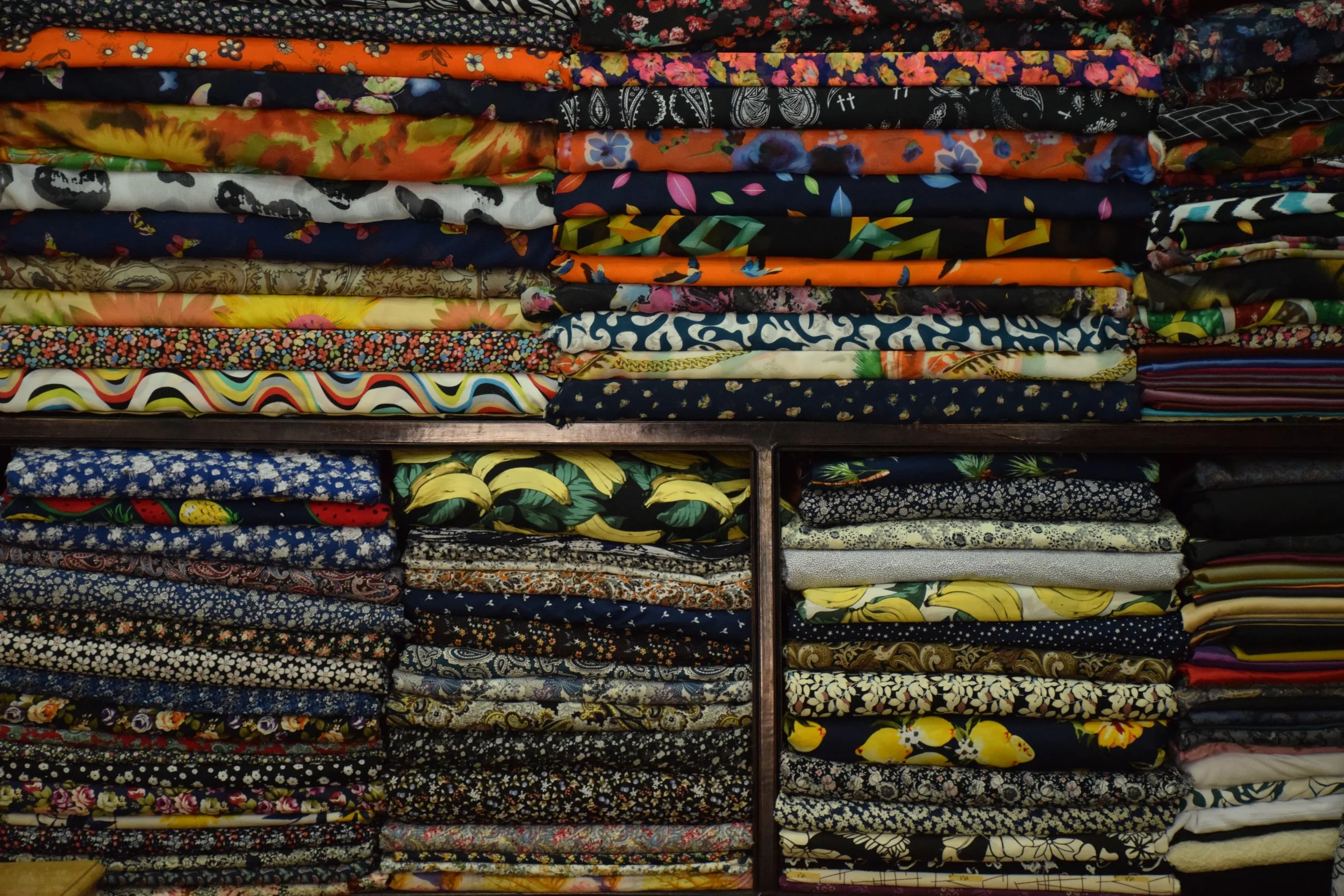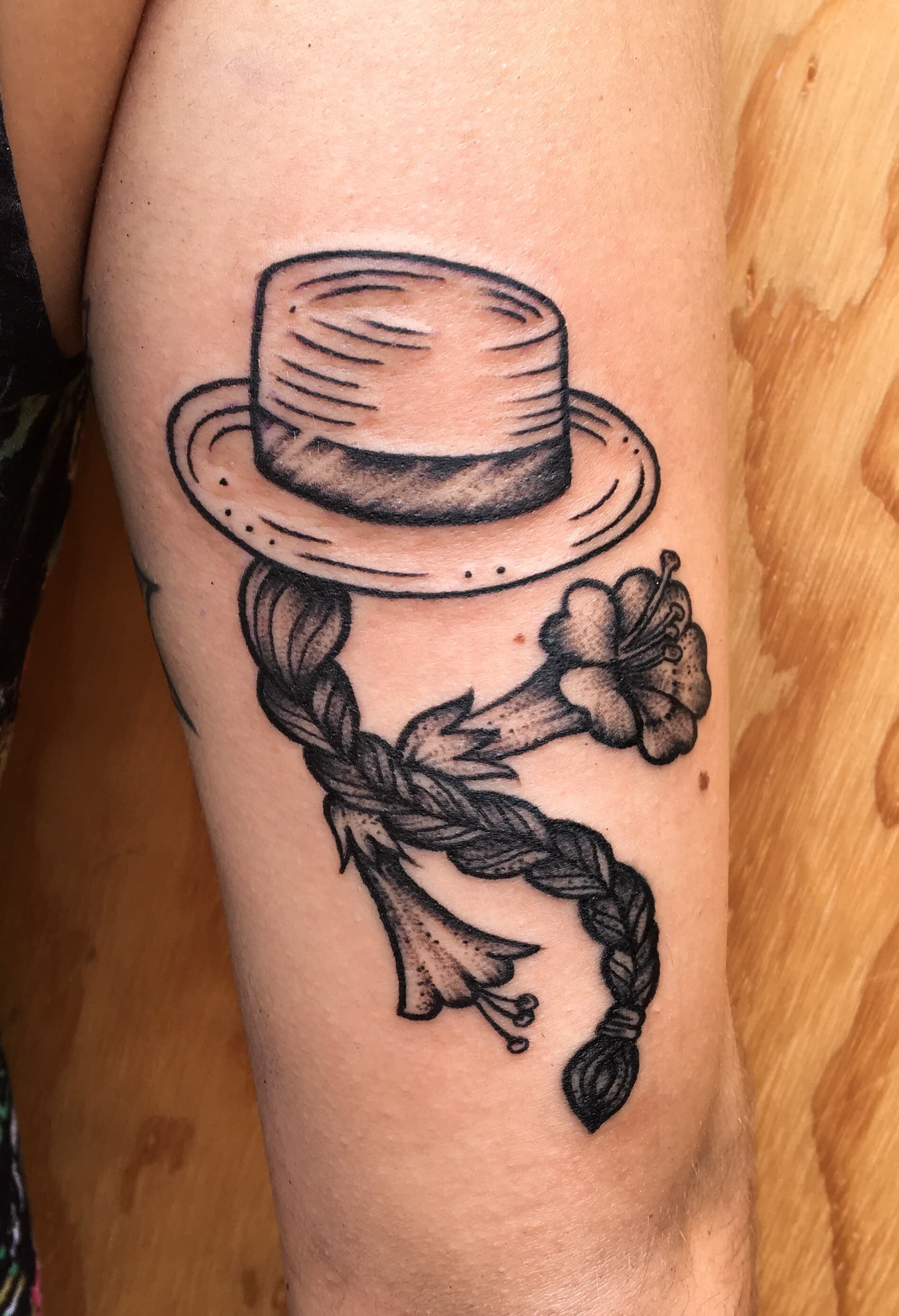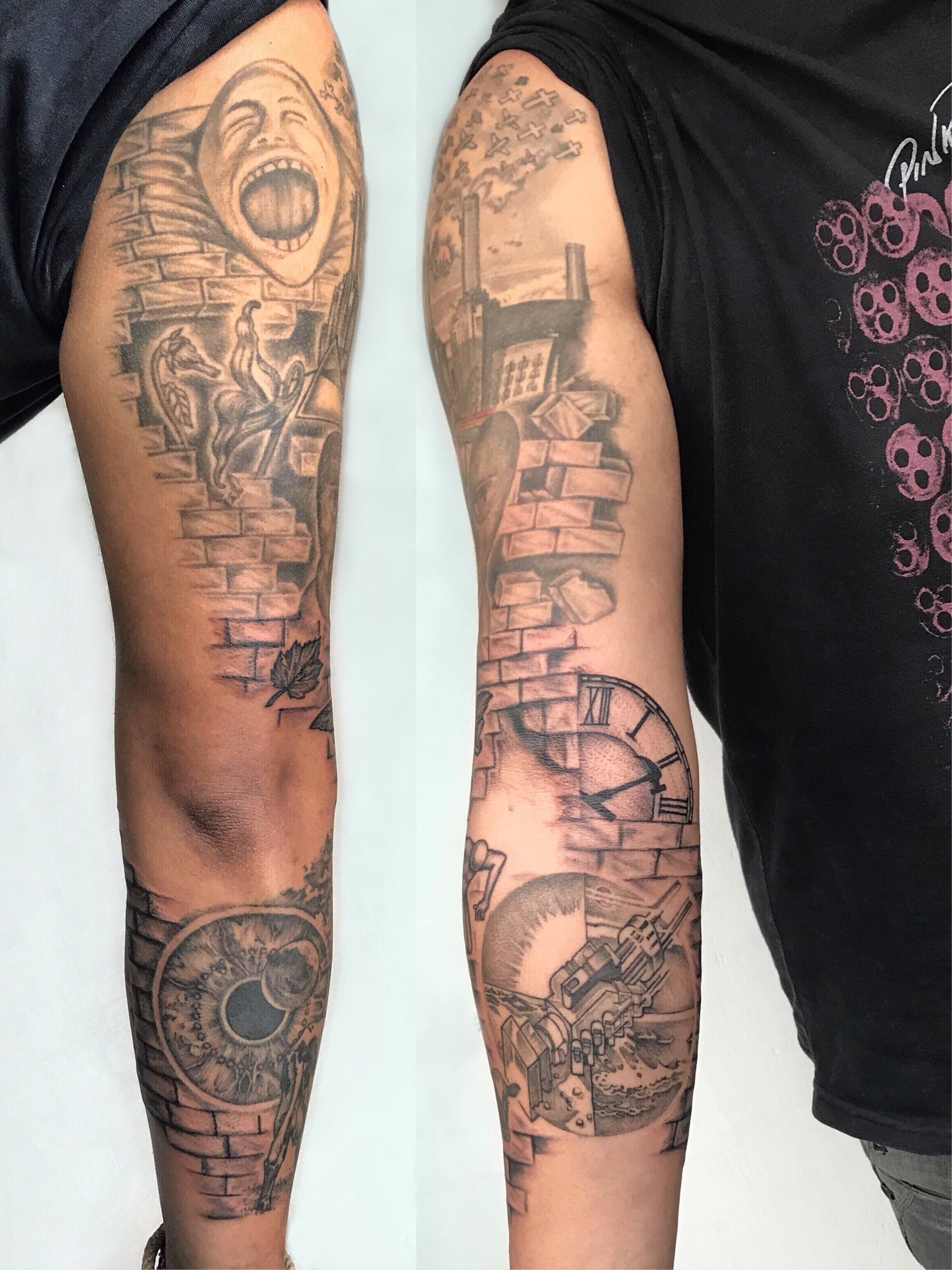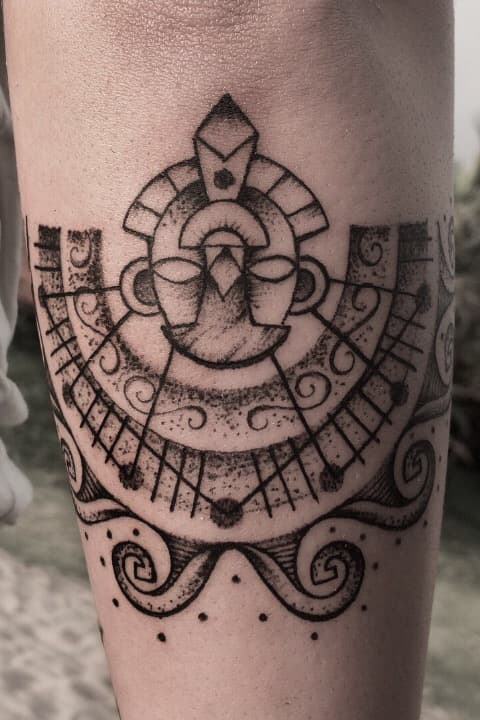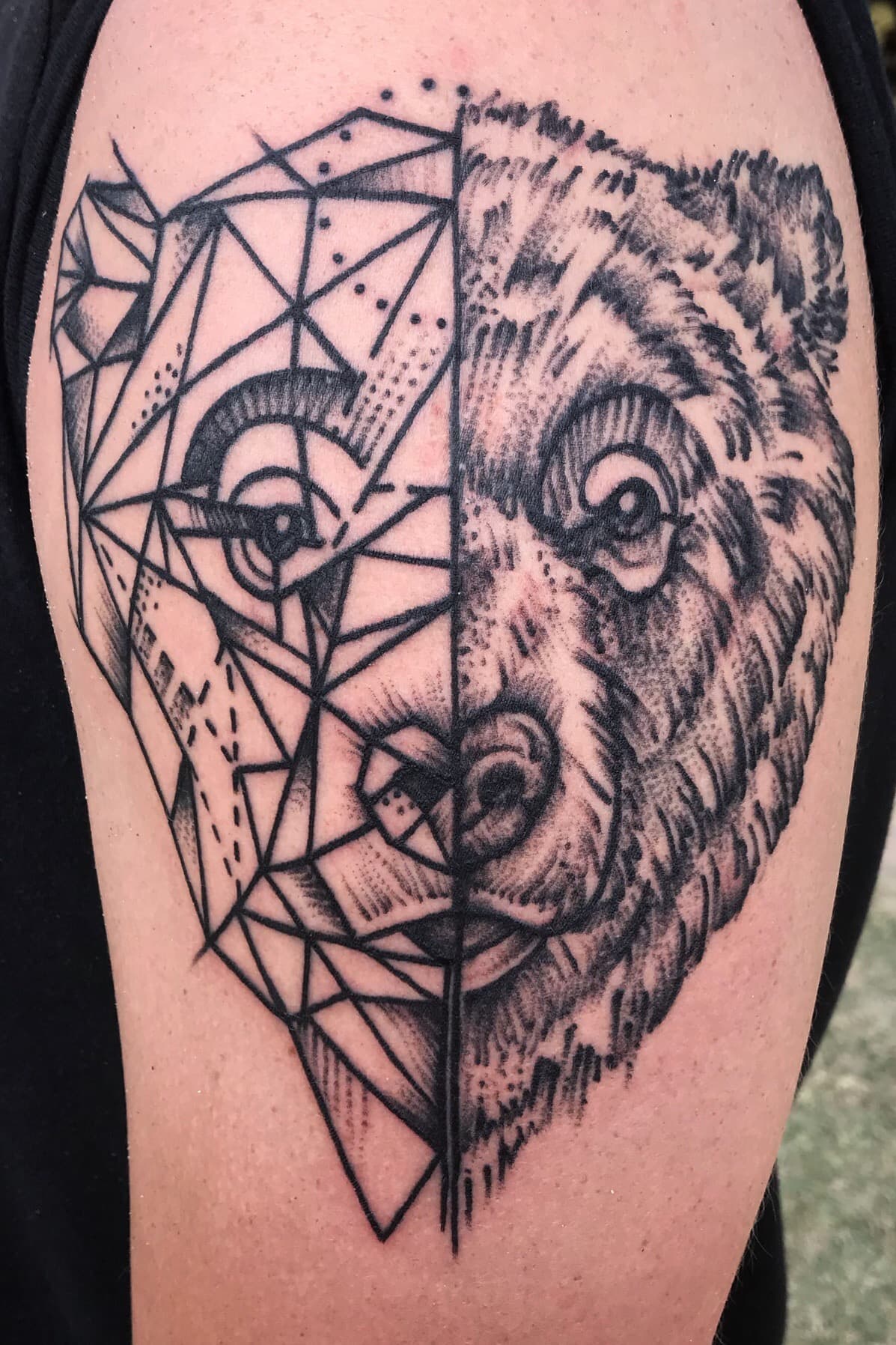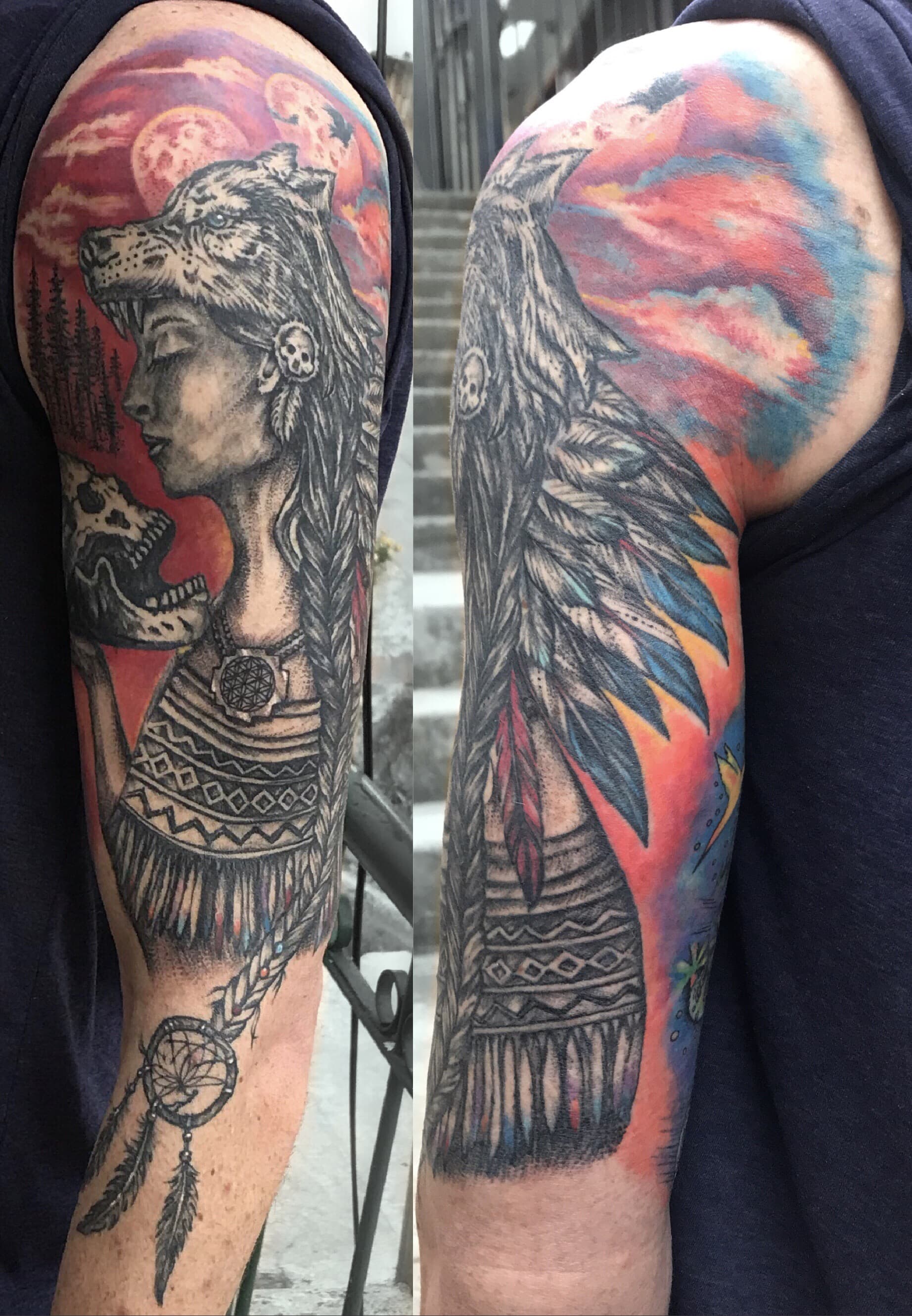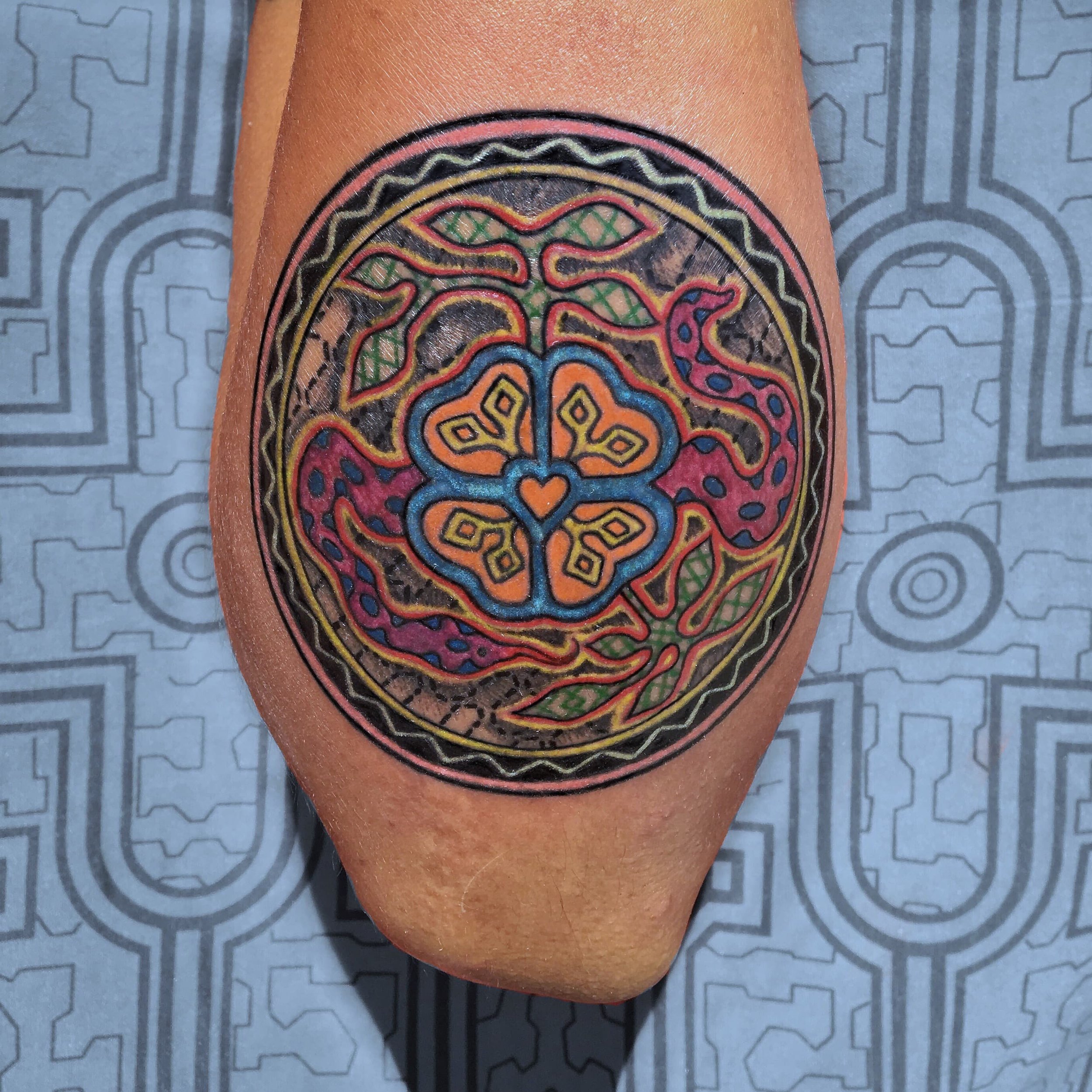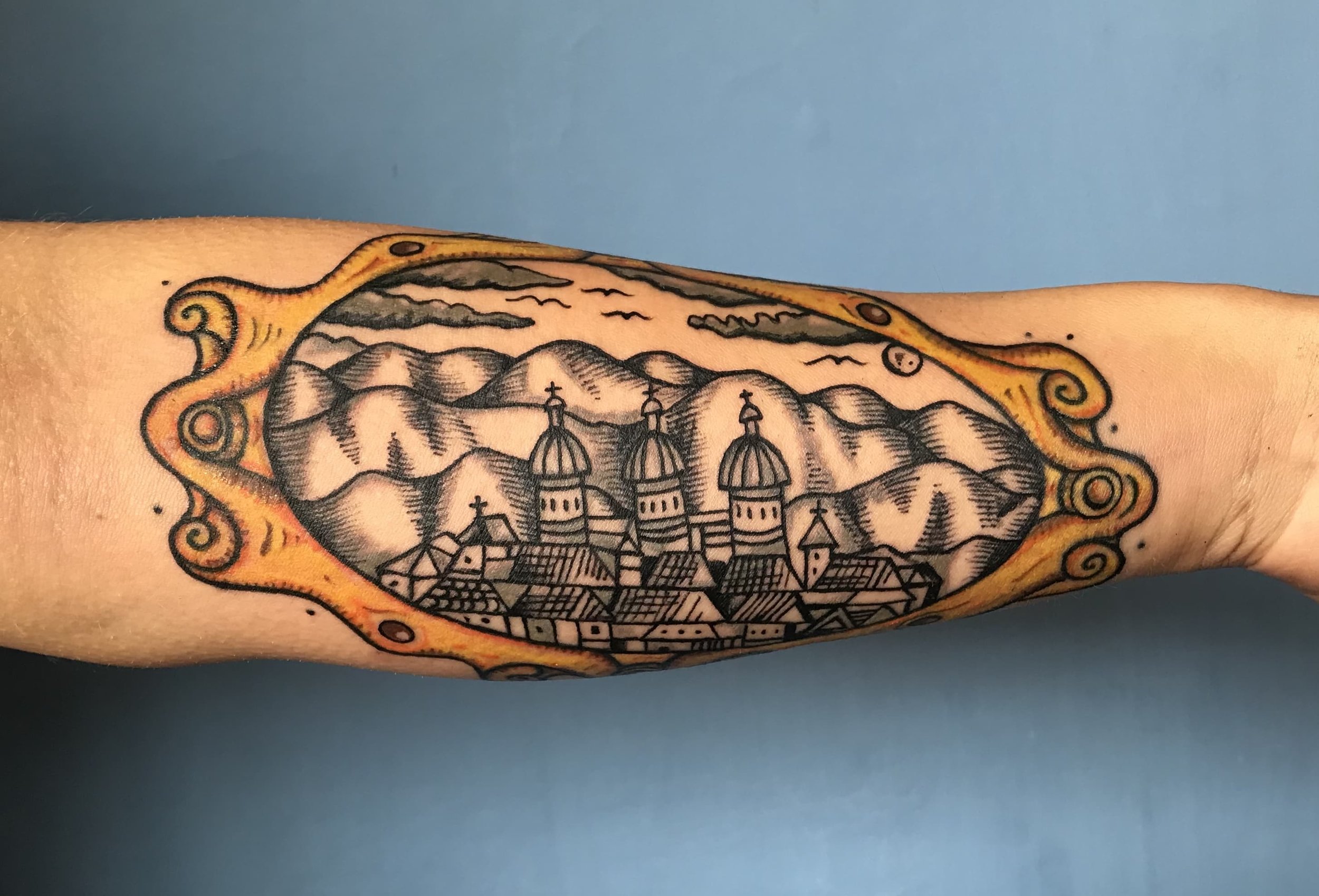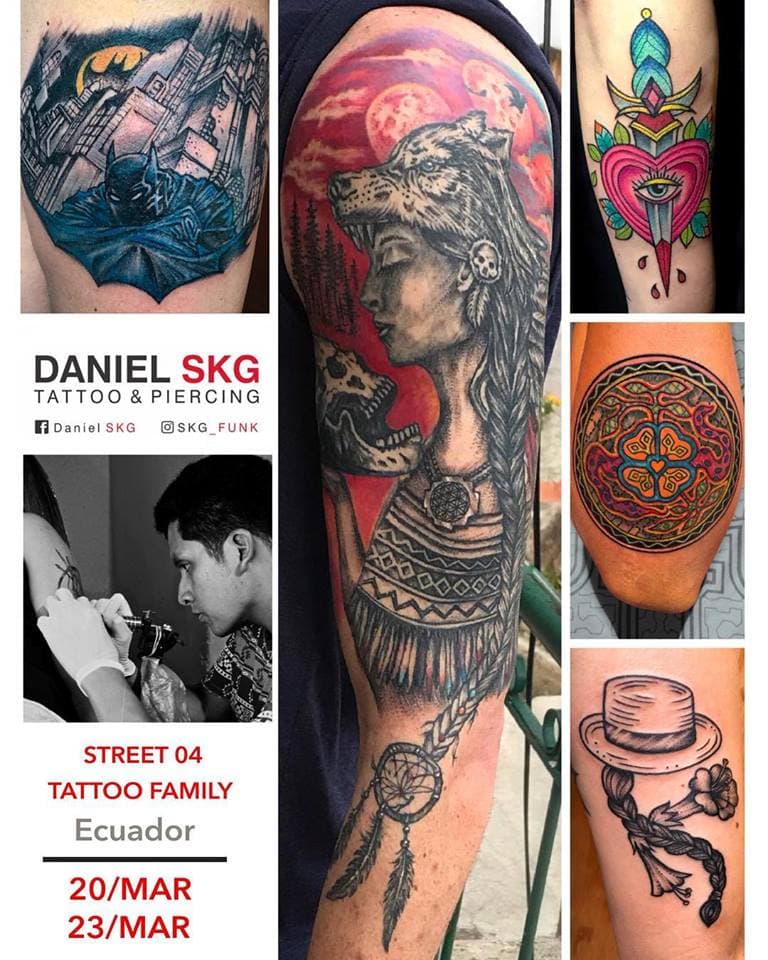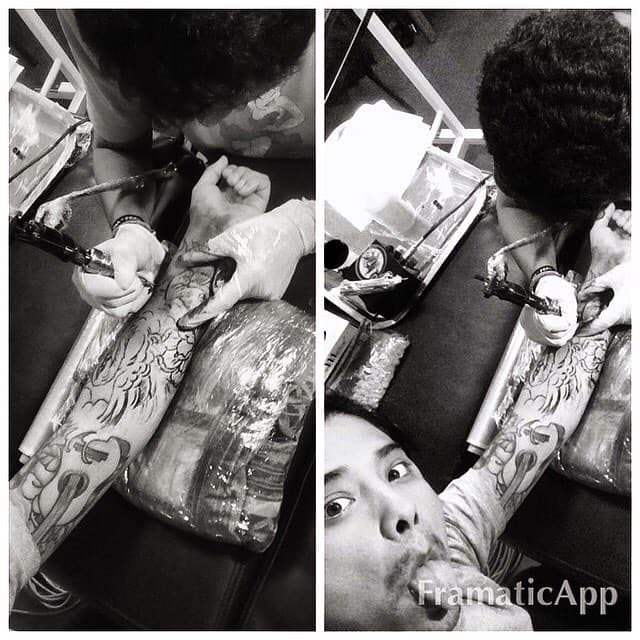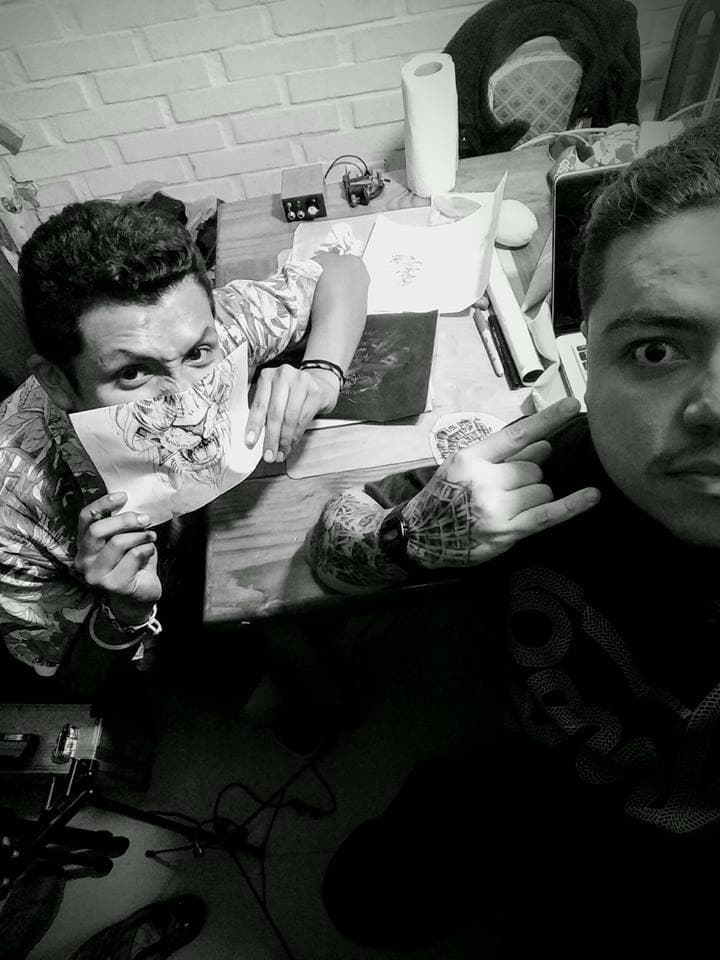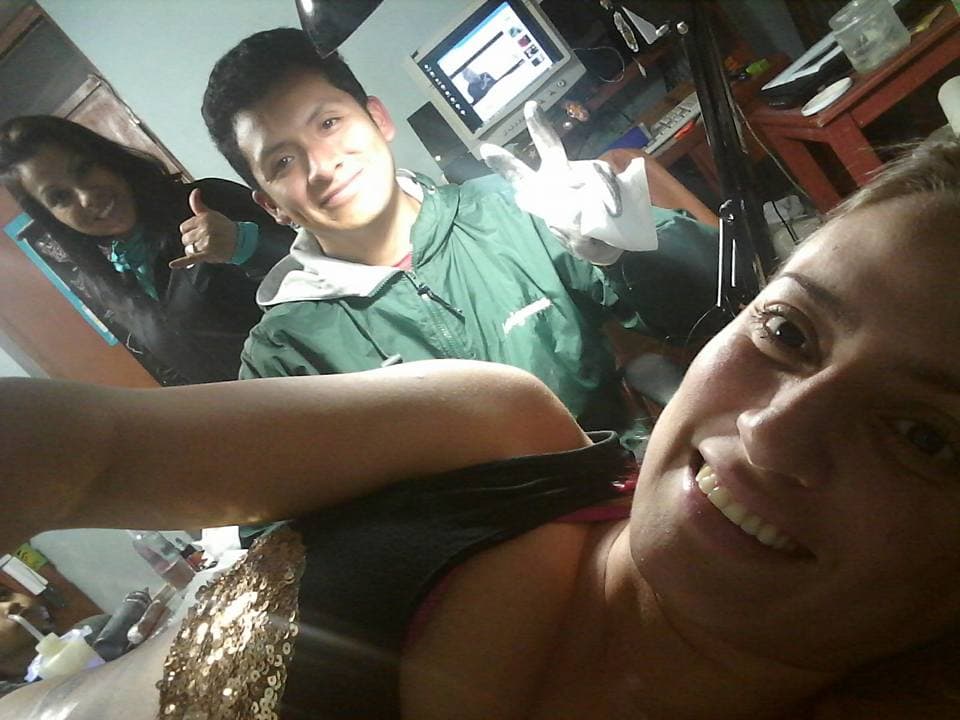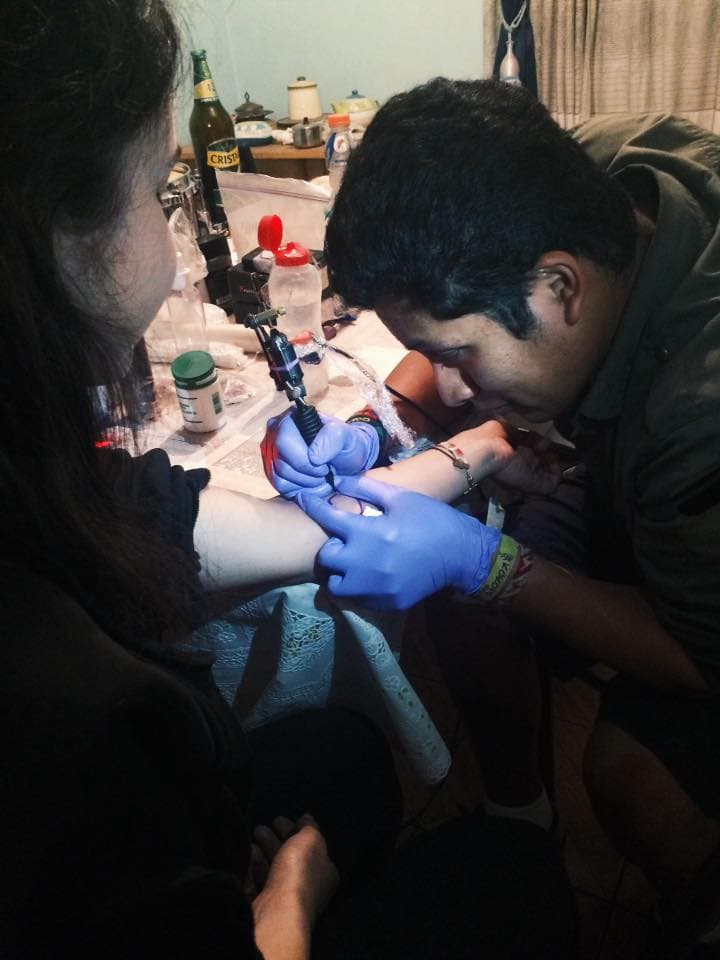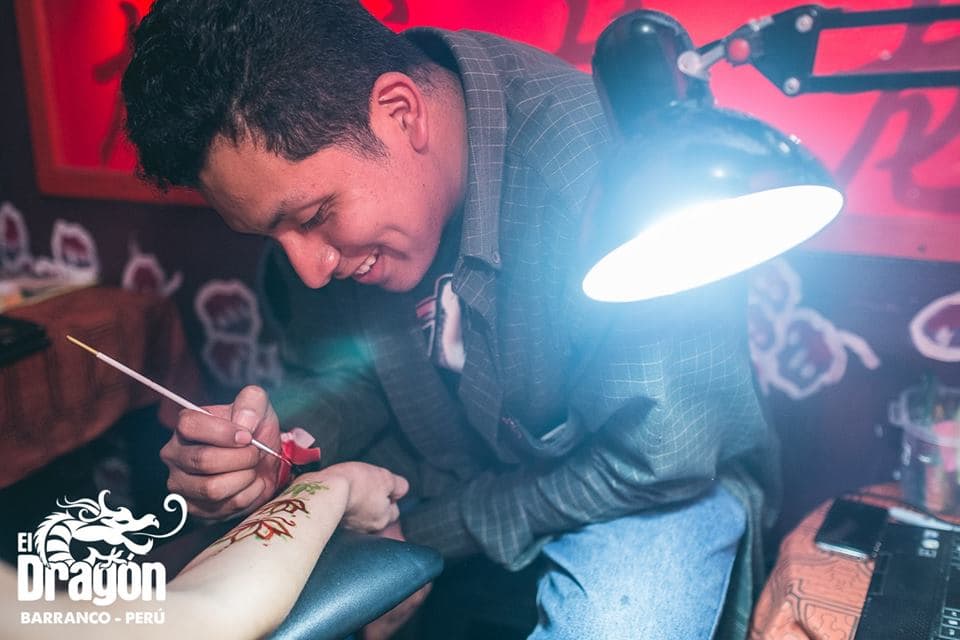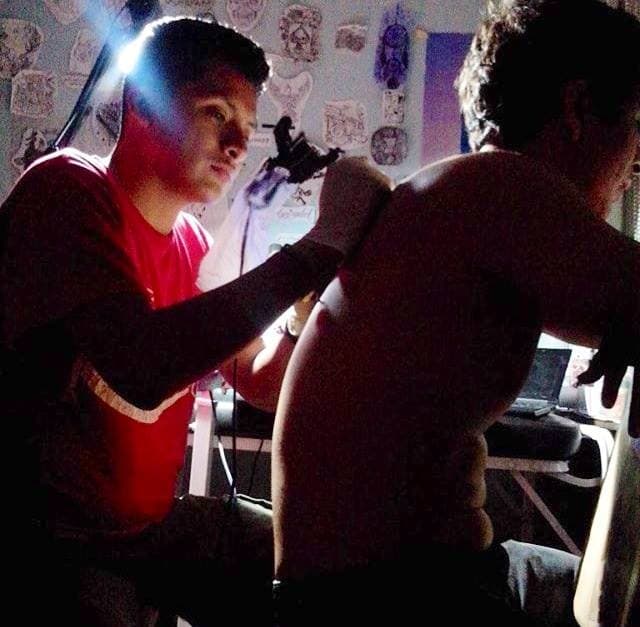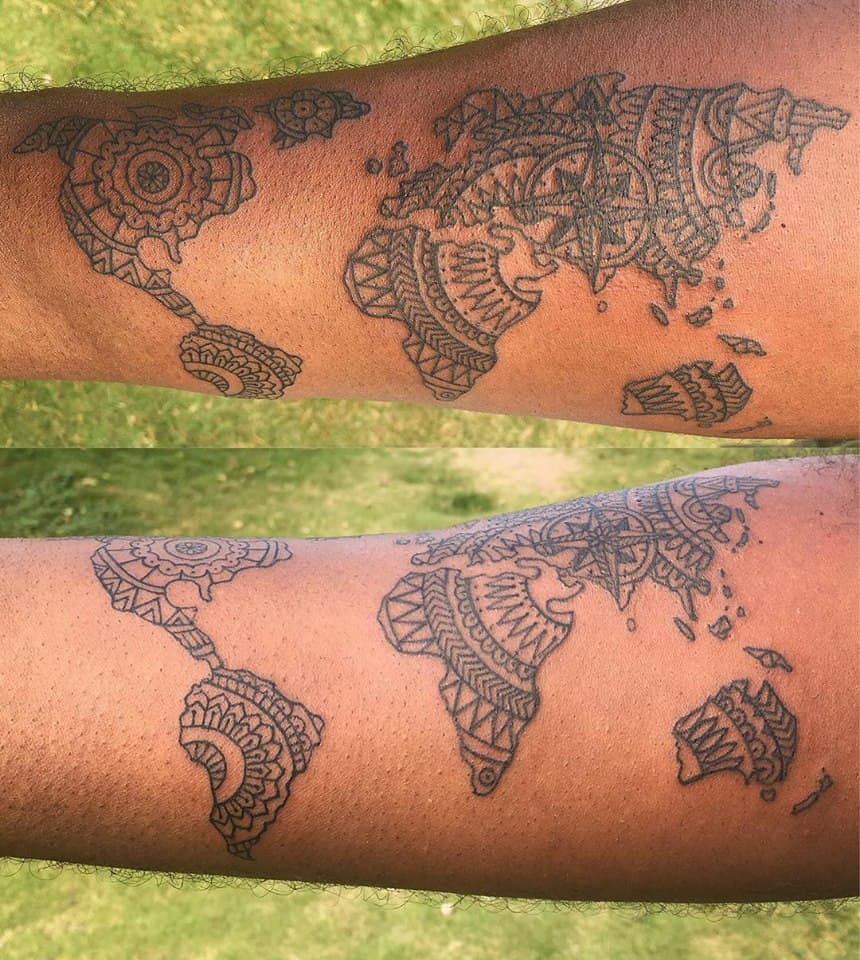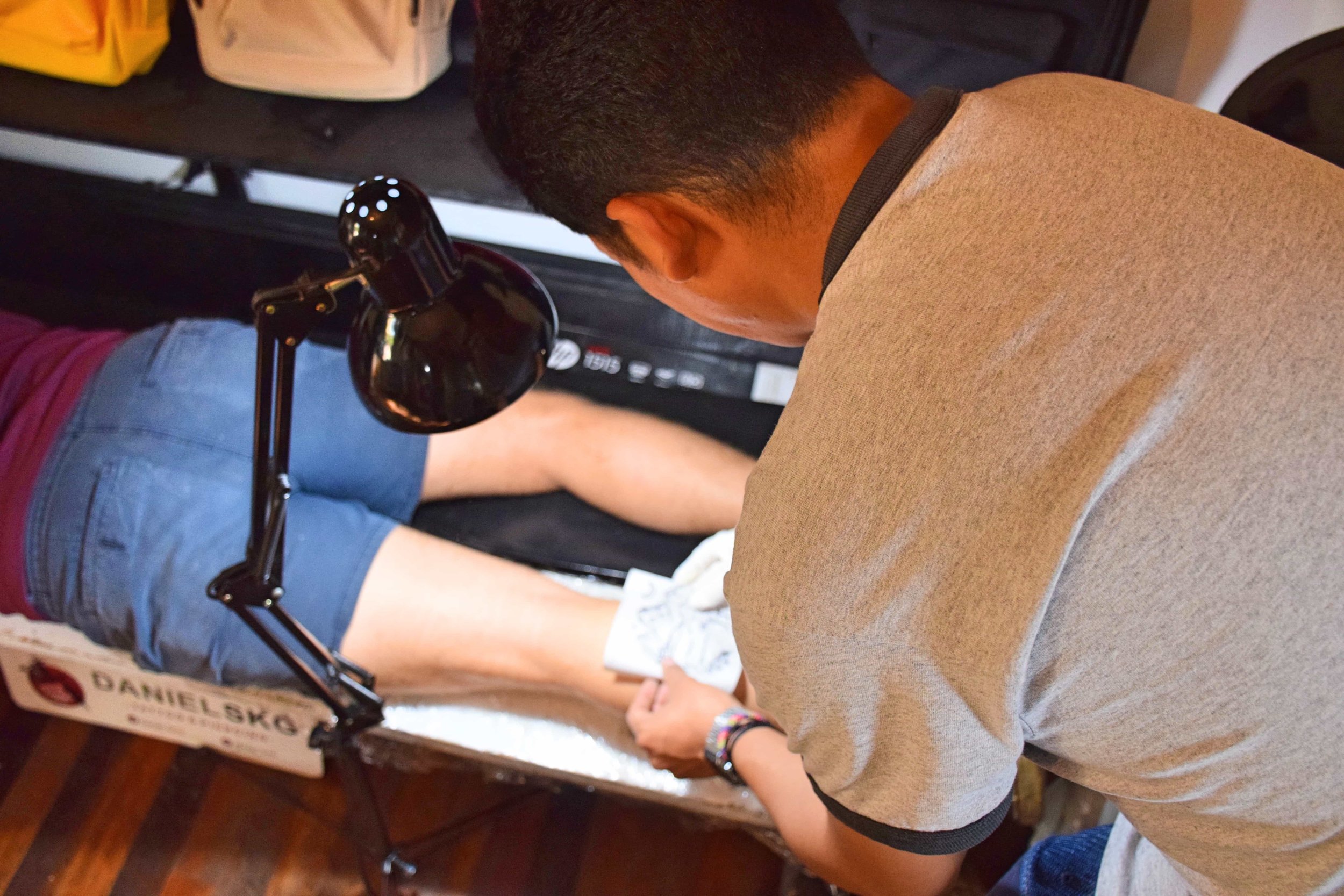If you want to worry less about the bureaucracy and enjoy more of your destination wedding, then make sure you know exactly what paperwork you need and where you need to submit it so you can get a marriage license in Vietnam.
Why Travel To Myanmar?
In late 2017, we decided to visit Myanmar for a two week Christmas/New Years vacation. We decided upon Myanmar, really, because it is a destination that not many tourists visit. For us, after being on the road for two years and exploring more than 17 countries in that time, the thought of going to an entire country that was "off the beaten path" was exhilarating. We had heard from many backpackers and expats that Myanmar was truly a gem of a country, hidden in plain sight of the world. From the welcoming government, the locals who will go out of their way to help you, to the mouthwatering food, lush nature, gorgeous temples and pagoda's, and amazingly cheap prices, Myanmar has it all.
You Went To Myanmar? Was It Safe?
When we got back from our trip, these were the questions we were constantly asked, from our family, friends, and other backpackers and expats. Let us cut straight to the chase, YES, Myanmar is a safe country to travel to and within.
Do You (we) Support The Rohingya Conflict?
No. Of course we don't support the terrible expulsion and treatment of an ethnic people. We wholeheartedly disagree with the way the country (or rather, military) of Myanmar is handling the situation and how the Rohingya people are being treated, detained, murdered, separated from their families, and expelled.
Detailed in the rest of this post, we explain the current Rohingya conflict and the role that both Myanmar and Bangladesh play. Additionally, we give a very detailed, albeit brief, history of the politics of Myanmar, and why you should travel to this amazing Southeast Asian country.
Current Political Conflict: Rohingya Persecution In Myanmar
The more than one million Rohingya Muslims are described as the 'world's most persecuted minority'.
Who are the Rohingya?
The Rohingya are a majority Muslim ethnic group, who have lived in Myanmar for hundreds of years.
Where in Myanmar are the Rohingya?
Nearly all of the Rohingya in Myanmar live in the western coastal state of Rakhine.
Where do the Rohingya come from?
During the time of British rule, many people migrated to the country for work. These laborers came from India & what is now known as Bangladesh. However, after gaining independence in 1948, the new government viewed the migration that took place during British rule as illegal and refused citizenship to many Rohingya.
What is the conflict?
Aung San Suu Kyi and her government does not recognize the Rohingya as an ethnic group or citizens, but rather as terrorists. In October of 2016, violence broke out between the Rohingya people and the military. The military accused the Rohingya of starting the violence by attacking and subsequently killing 9 police officers at a border outpost near the Bangladeshi border. The military responded to the 'terrorist' group much like the state of Israel reacts to attacks from Palestine - with brutal force, disregard for civilian life, and without fear of international response. Since 2016 the military has been accused of killing more than 1,000 Rohingya, displacing tens-of-thousands more, and burning entire villages to the ground, leaving the wounded to die in the blaze.
Why are the Rohingya stateless?
Myanmar: In 1982, Myanmar passed a new citizenship that specified and recognized 135 different ethnic groups - the Rohingya were not included. As a result of the law, their rights to study, work, travel, marry, practice their religion and access health services became restricted.
Bangladesh: Similar to the government of Myanmar, the Bangladeshi government also see's the Rohingya people as illegal immigrants. Most have never lived in Bangladesh and therefore are not legal citizens of the country.
What is being done to solve the problem?
Myanmar: Aung San Suu Kyi and her government entrusted former UN chief Kofi Annan with finding ways to heal the long-standing divisions in the region. However, many argue that this was just a way for Aung San Suu Kyi to "pacify the global public opinion and try to demonstrate to the international community that she is doing what she can to resolve the issue"...without actually resolving anything.
Bangladesh: Bangladesh has described the treatment of the Rohingya people in Myanmar as 'genocide', yet they are doing little to help or treat them any better. According to numerous news outlets, Bangladesh is refusing to let many Rohingya walk freely into the country. Their solution is to provide the Rohingya people a small, confined, holding camp, on an island that is prone to flooding and has even been called 'uninhabitable' by many Human Rights groups. Bangladesh has told Myanmar that they should "take their nationals back."
*It is important to note that Aung San Suu Kyi and her government do not have control or power over the military. The military acts independently from the rest of the democratically elected national government.
Understanding The Political History Of Myanmar
1824 - 1948: Myanmar, then called Burma, was ruled as a British colony.
1948: On January 4th, Burma achieved independence from Britain, and became a military ruled country, renamed the Union of Burma.
1989: The ruling military party changed the name of the country from Burma to Myanmar.
1990: General elections were held in Myanmar. The elections were won by Aung San Suu Kyi and her political party: the National League for Democracy (NLD). However, the military refused to recognize the results and continued to rule the country.
Aung San Suu Kyi
2008: After facing criticism from the West, Myanmar's military government agreed to rewrite the constitution and create the "Program of Reform," which allowed other political parties to participate in elections.
2015: Myanmar held elections again. The National League for Democracy won. Again, Aung San Suu Kyi was to become president.
However, Aung San Suu Kyi is constitutionally barred from being president. Why?
1) Both of her sons are British citizens & according to a clause in the constitution no-one with children of another nationality can be president.
2) The constitution demands the president must have military experience - Aung San Suu Kyi has no such military experience.
If Aung San Suu Kyi won the election, why can't they just make an amendment to the constitution, allowing her to take power?
During the rewrite of the constitution in 2008, the military specified that it would always retain 25% of seats in both houses of parliament allowing the military power to veto any move to change the constitution.
How does Aung San Suu Kyi have Presidential power if she isn't President?
The NLD won the election. Because Aung San Suu Kyi could not be President, all the party had to do was find another suitable and likable candidate to work side by side with her. It would be through him and his legitimate presidency, Aung San Suu Kyi would maintain power. She stated that she "would rule from above” (by proxy).
How Does The Conflict Effect You?
To put it simply, it doesn't.
Are you supporting the oppression of the Rohingya if you travel to Myanmar? No. The only money that you spend that could potentially fund the military and this conflict, would be the money you pay for your visa. Other than that, all the money you spend at restaurants, bars, souvenir shops, on buses, or accommodation will go directly to the locals and their respective companies, not the government or the military.
Can I go into the Rakhine state? No. Access to this area is restricted and secured with 'border' crossings. This includes the media.
Is the Rakhine state the only conflict zone? There are a small amount of Rohingya in other areas of the country but the Rakhine state is where the majority of them are located. If there is conflict in other areas of the country, it too will be restricted to media and tourists.
Do the citizens of Myanmar support the military or oppose the conflict? Like the military, Aung San Suu Kyi and her government do not recognize the Rohingya as an ethnic group or citizens. Most citizens tend to agree with her. However, you can find opinions on both sides of the political spectrum that support and denounce the way the Rohingya people are being treated.
"Are we willing to live together with them? Of course, if they truly want to integrate with the native people and are willing to sing our national anthem. No country will accept 1 million + of refugees, especially a third world country like Myanmar [otherwise]. We are disappointed at the world medias for portraying us as evil with their one sided biased news like this."
- Pyie Sone, Myanmar National
Locals of Nyaung Shwe
Valley in Nyaung Shwe
Why You Should Travel To Myanmar
Myanmar has the power to surprise and delight even the most jaded traveler. You will be absolutely amazed by Shwedagon Pagoda in Yangon, even if you feel you are 'templed out' after traveling Southeast Asia. Stand in awe of the more than 4000 sacred stupas that are scattered across Bagan. Take hundreds of photos while enjoying a long boat ride down Inle Lake to watch the 'fishermen' perform their unique craft. Fly high over the city of Mandalay or Bagan in a hot air balloon during sunrise, and explore the Golden Rock Pagoda or Mount Popa.
If you want to learn more about traveling to or within Myanmar, check out our Myanmar Country Guide.
We give you a breakdown of how to enter the country & how to get around once you're there, what are the most popular things to do and see, accommodation recommendations, a budget breakdown, and some travel tips and helpful hints for this country.
Inle Lake
Locals of Yangon
Shwedagon Pagoda, Yangon
“This is Burma...quite unlike any land you know about”
- Rudyard Kipling in Letters from the East
Itching For More Information About Southeast Asia?
Wildly unlike anywhere else in Asia, Japan merits a special kind of traveler, willingly to expand both their wallet and their stomachs for a fantastic tour through history, harmony and heart. Whether it’s the tantalizing shops in Shibuya or the breathtaking hike up Mount Fuji that have you plotting a trip, the wholesome and happy people of Japan make any time spent here memorable.
Fushimi Inari-taisha Shrine (Orange Temple), Kyoto
Why Travel To Japan
We were captivated by everything in Japan: their food, their preservation of nature, their standards of cleanliness, their massive high rises, efficient railways, underground anime libraries, above ground capitalist corners—the list barrels on. It’s a fascinating country to explore as an outsider looking in and the best way to do it is through your stomach. In all corners of Japan, the food is some of the most creative and strangest there is. With each new city we had fun losing ourselves in the open markets and peering behind Shoji paper doors to find new food. Though the country is rather expensive to explore, the amount of parks, monuments, temples, and museums you can visit for free offer a small opportunity for backpackers to get a taste of the island.
The National Flag of Japan
The Nitty Gritty Facts
127 million people live in Japan, 9.27 million of them live in Tokyo, the capital.
The National Language of Japan is Japanese.
The Japanese name for Japan is “Nippon” which means “sun origin.”
Japan is made up of 6,852 islands.
The highest point in Japan is Mount Fuji, which stands at 3,776m high (12,388ft).
Sumo is the National sport of Japan.
Our Route
Tokyo — Kyoto — Osaka
Roughly a seven-hour journey from Tokyo to Kyoto by bus and costs $30.
Roughly a 1.5-hour journey from Kyoto to Osaka by train was included in our Japan Railways Pass.
Traveling throughout Japan is easy because everything is so well connected and their public transportation is top of the line. It can be affordable as well if you're putting in the effort to sort out the best option. Checking out the bus options rather than the bullet train is a good way to save some money. It's also worth exploring the different budget airlines to try and score an affordable domestic flight.
Budget airlines for Japan include
The Rugged Budget
The national currency in Japan is the Yen 110 Y = $1 USD
All Day Subway pass $6—$10 USD
Single Fare Subway ticket .50—$4 USD
Local buses $2—$10 USD
Accommodation in a 8 bed mixed dorm $14—$27 USD
Private room in a 4 star hotel start at $80 USD
Beer at a bar $6 USD
Beer from a shop $2 USD
Street food $3—$6 USD
Sit down restaurant $9— $18 USD
A pack of 20 cigarettes $3—$5USD
Japan From The Scratch My Pack Lens
Osaka Castle
View of Osaka skyline
Asakusa, Tokyo
Asakusa, Tokyo
Imperial Palace, Tokyo
Tokyo
Osaka
Kyoto
Tokyo
Helpful Hints For Traveling In Japan
It's more economical to travel by bus, but it does take more time. If you have a limited amount of time to travel through the country the Japan Rail Pass may be the best option for your trip. There are plenty of different options depending on the length of your travels, regions, and how you want to travel that make the Rail Pass flexible. You can buy a passes valid for 1 day up to 2 weeks and for the entire country or just for selected regions. We chose to take the bus from Tokyo to Kyoto (as it was much cheaper than the train ticket), but then decided to buy the rail pass for the regions of Kyoto and Osaka. We purchased a 7-day pass that allowed us to travel on any train between the two cities, and within the cities, as much as we wanted for a 7-day period.
Japan is definitely known as an expensive country to travel in, but it can be done on a budget. The food in Japan is delicious on any budget. Eating well in Japan doesn't always mean breaking the bank. You can walk the markets to get squid on a stick, buttered oysters, fresh prawns or gyoza (pot-stickers) all under $6. The sushi is good everywhere, so don't be afraid to pop into a kitschy side shop rather than a sit down proper restaurant to feed your appetite for good sushi.
You don't have to stay in Shibuya in order to enjoy its craziness. There's more affordable accommodation outside of the intense crossroads of Tokyo that are easily walkable and the metro can take you anywhere in the city. It may be crazy and confusing but it's a lot of fun to master.
Buy beer from the local shops rather than the bars or restaurants to save a bit of extra cash.
Japan uses the same power plug as in the United States. I.e. any plug from the US will work in Japan. The voltage is 100v whereas the US is 110V - so it may take a little longer to charge your devices.
Activities That Won’t Scratch Your Budget
Shibuya Crossing, Tokyo: Free
Shibuya is a lively district of downtown Tokyo that by night is an incredible show of people and lights. Join the thousands of fascinated pedestrians taking in the awe of light and sound by walking the Shibuya Crossing, often referred to as the Time Square of Tokyo.
Takeshita Street, Tokyo: Free
There's so much going on in the Shibuya area, but Takeshita road is a concentrated microcosm of everything typically, and strangely, Japanese. It's several blocks of crazy shops, karaoke, arcades, candy, and of course anime. It's aesthetically entertaining to take a walk along side locals and tourists alike.
Shinjuku, Station, Tokyo: Free
This is Tokyo's busiest station serving more than two million passengers a day and it's worth a visit. The surrounding area of Shinjuku is a less commercial version of Shibuya. It features some of Tokyo's tallest buildings and you can visit the Tokyo Metropolitan Government Office and their observatory floors for free for a fantastic view of the whole city.
Sensoji Temple, Tokyo: Free
This is an ancient buddhist temple built in the traditional Japanese tradition. A beautiful example of Japanese history.
Imperial Palace, Tokyo: Free
The Palace is surrounded by an enormous park with different gardens and grounds that visitors can stroll through for free. Owned by the Royal Family, the palace itself is only open two times a year, but you can view the castle from the park. The view from the bridge doesn't disappoint.
Asakusa, Tokyo: Free
The entire area of Asakusa is filled with shops selling everything you can imagine. There are lots of street stalls and restaurants, bars, art, music, and temples. This is a fun place to get lost for a day.
Osaka Castle, Osaka: 600 YEN ($5.50USD)
You only have to pay if you want to go inside. The inside of the castle is impressive. It's a pristine museum, but the view from the roof is what makes the $5 worth it. It's a 360 degree view of the city.
Fushimi Inari-taisha Shrine (Orange Temple), Kyoto: Free
This was one of our favorite activities. The two hour walk from the Inari Temple up Inari mountain is a beautiful stroll through the forest. Of course the biggest draw are the hundreds of torii, traditional Japanese gates, that make up the path way and lead visitors to the temple at the top. It’s a sea of orange archways that’s often crowded by tourists, however, we found that the farther up the mountain you walk, the less tourists we came across.
Nishiki Market, Kyoto: Free
Who doesn't love a good street market. Personally, this one has been one of our favorites. It’s an expansive one that stretches at least 10 blocks. Here you can find lots of local flare, fresh seafood, traditional drinks, desserts, clothes, souvenirs, and of course mini temples tucked in varying alleyways.
Where Did We Stay (Accommodation We Recommend)
Obi Hostel, Tokyo $18/night for an 18 bed mixed dorm
This was our favorite hostel in Japan. The hostel is located in a quieter neighborhood, which meant we were some of the only tourists around (at the time that's exactly what we wanted). The staff was awesome, the hang-out area was relaxing, the dorm rooms were huge and every bed was pod style, complete with privacy curtains, a light, and electric socket in each one. There were plenty of lockers, clean bathrooms, and a washer and dryer. We extended our stay here because we enjoyed it so much.
Guesthouse Origami, Kyoto $14/night for an 26 bed mixed dorm
Pretty average hostel. Nice beds, rooftop hangout area, great location and seemed to attract really cool fellow backpackers. The owner seemed to have lots of information about the city and kept the hostel really clean. The only drawback was check-in was not until 4pm.
Hostel Wasabi Osaka Bed & Library, Osaka $18/night for an 18 bed mixed dorm
This is a super cool design for a hostel. The main floor of the hostel (reception) is filled with books. All the walls are bookshelves completely packed with books from all over the world. There are even secret hang out rooms halfway up the bookshelf you can climb into and hang out and lounge. The bathrooms were 5 star. They were immaculately clean, with granite counters, vanity style chairs and makeup area, hair dryers, mouthwash, soap, slippers, towels, and lots of showers. Both the men and the women’s had a washer and dryer. The dorm rooms were large with lots of beds, and each pod had a privacy curtain, a light, and electric socket which made them comfortable. They also offered free hot or cold drinks and free Miso soup which made the hostel even more cozy.
Itching For More Information About Asia?
From the crystal waters of Koh Tao, the riveting jungles in Pai, the nightlife of Bangkok, and the temples in Chiang Mai, Thailand is a playground for all ages. Eat what the locals eat at the many markets that take over cities across the country, learn Muay Thai at one of the many matches that happen every weekend, observe and walk among monks at any of the many monasteries or temples, and swim with fish you have never seen before in crystal clear water next to some of the most breathtaking beaches you have ever seen.
View of Bangkok
Why Travel To Thailand
Thailand has a very interesting position on the spectrum of Southeast Asia, it’s both wild and crazy and surprisingly organized. It’s a great first taste of Asia where you can ease into the bustle of traffic and street food in Chiang Mai, travel down Khao San Road to experience the nightlife in the electric capital Bangkok, and retreat to some of the most breathtaking beaches in the south near Phuket. We love Thailand for the people, the food, the history, and for the never ending access to all sorts of landscapes and activities that fit a tight budget. Thailand is an easy country to travel within and is one of the most accessible countries in Southeast Asia.
National Flag of Thailand
The Nitty Gritty Facts
68 million people live in Thailand, 5 million of them live in Bangkok, the capital
Thailand’s national language is Thai.
The world’s largest golden Buddha is in Bangkok.
Thailand shares a border with four countries: Myanmar, Laos, Cambodia, and Malaysia.
The National currency of Thailand is the Thai Baht (THB)
Thailand is the only Southeast Asian country that was never colonized by an European country.
Our Route
Phuket — Ao Nang — Koh Tao — Bangkok — Chiang Mai — Pai — Chiang Ria
Flying, like in most places for Southeast Asia, is relatively affordable between major destinations. You can usually get away with not checking a bag either which will cut down your ticket price.
Thailand Airlines include:
Budget Airlines include:
Air Asia X
A fun and popular way to explore the country is by bus. You’ll get to see more of the diverse countryside or you’ll save on a nights accommodation by taking an overnight bus. We found that 12go Asia was a trusted site to start our research, get prices and eventually purchase tickets.
The main mode of transportation down south around the islands is by boat. You’ll either take the speed boats during the day that seem to stop running around 3pm or you’ll have to take the slow overnight boats that depart around 10pm. Between some of the closer islands (Railay Beach, Phi Phi, James Bond island etc.) the main transport is the long-tail boat.
There’s also a train that mainly runs from Bangkok to Chiang Mai that is worth checking out if you prefer a bit of extra comfort on the overnight journey between the two cities. The train, though a much longer journey than by bus, can be the cheapest option if you plan far enough in advance. The views are supposed to be magnificent, especially during sunrise.
The Rugged Budget
Thailand’s currency is the Baht 33 THB = $1 USD
Accommodation in an 8 bed mixed dorm: $8.40/night
Private room in a 4 star hotel start at: $30/night
Beer at a bar: 80 THB ($2.40 USD)
Beer from a shop: 50 THB ($1.50 USD)
Street food (like Pad Thai): 30 THB ($0.90 USD)
Sit down restaurant: 100 THB ($3 USD)
A pack of 20 cigarettes: 80 THB ($2.40 USD)
What our specific route of travel cost:
Phuket— Krabi in a minibus: 140 THB ($4 USD)
Krabi Town — Ao Nang local truck: 60 THB ($1.80 USD)
Krabi Town — Suratthani in a minibus: 180 THB ($5.80 USD)
Suratthani — Koh Tao on a boat: 600 THB ($18 USD)
Koh Tao — Bangkok combined boat/bus: 950 THB ($28 USD)
Bangkok — Chiang Mai on an overnight bus: 534 THB ($16 USD)
Chiang Mai — Pai by minibus: 150 THB ($4.50 USD)
Chiang Mai — Chiang Rai: 129 THB ($3.90 USD)
Thailand From From The Scratch My Pack Lens
Au Nang
A baby 2 year old elephant at an elephant sanctuary, Chaing Mai
Wat Rong Khun (The White Temple), Chiang Rai
Au Nang
Wat Saket Temple, Bangkok
Monkey Hill, Au Nang
Elephant Sanctuary, Chiang Mai
Wat Phra That Doi Suthep Temple, Chiang Mai
Au Nang
Helpful Hints For Traveling In Thailand
Flying domestic in Thailand is cheapest when flying from the south to north rather than flying from north to south. We found that international flights into the islands were cheap and then we could work our way north by either busing or flying.
Depending on the city, the method to finding a bus is different. Taking transportation out of Bangkok we found that we could buy tickets easily online. From the islands the the best option was to buy tickets from a tour company that pick you up directly from your hotel or hostel. In other major cities the cheapest way to book transportation was by heading directly to the bus station.
Buses from Chiang Mai to Pai don’t run in the evening because the mountainous three hour journey is dangerous at night. The latest we found a bus was at 6pm leaving Chiang Mai the earliest was 7am.
Renting a motorbike in Thailand requires that you leave your passport upon renting. Technically you’re also supposed to have either a motorcycle license or international driver’s license, but most companies will rent to you regardless. Police however will randomly set up checkpoints to check and fine tourists illegally. *Important note - There is a scam going on in some of the cities regarding your passport and motorbike rental. The scam happens upon the return of the motorbike you rented. They will find damage on the bike (that was already there) and claim you did it. They will then try to charge you money to fix it. Make sure you take lots of pictures or a video of the bike and all its components the moment you rent it (let them see you do this). This will protect you from getting scammed and protect your wallet from having to pay for damage that was already there.
7/11 is the hot spot for cheap food. They often have discounted "buy 2 deals" on snacks, water and food. Surprisingly, they have good frozen meals and their toasties are probably the most iconic Thai meal among backpackers. Only 25 THB ($ .75USD) for a ham and cheese toastie.
In smaller parts of Thailand it’s easier to specify that you require a meal with no meat rather than requesting a vegetarian meal. Buddhist vegetarianism often includes abstaining from eating onions, garlic, leeks and chives, because they may distract one’s path to mediation because of the potent smell.
Travel with bug spray and sunscreen. It will come in handy more times than you think.
Thailand supports all power plugs, but for countries such as the US, Canada, and most of South America, you’ll need a voltage adapter.
Activities That Won’t Scratch Your Budget
Walking Bangla Road, Phuket: Free
A lively and surprising strip off of Patong Beach that offers everything from tourist t-shirts to Ping Pong shows. It’s a spectacle to sit and people watch just around sunset when the lights come on and the dancers come out. Visit side streets for the best beer deals (60 THB for a Chang Beer) and crazy shot deals (6 tequila shots for 100 THB - that's only $3USD).
Thai Boxing Match, Bangkok: Free
On Sunday afternoons you can visit a Thai Boxing match for free at the Chatuchak Market, that usually start around 2pm. It’s best to get there early to get a spot ringside. Otherwise a match will cost you around $15-$30USD any other time, anywhere else.
Karon Big Buddha, Phuket: Free
You can walk up the hill (6km) or rent a motorbike to visit the Buddha following signs off of Chao Fa Road East near Chalong. It’s a great place to watch the sunset.
Monkey Hill, Ao Nang: Free
Heading down the beach with the ocean on your right, you’ll come across a path leading over Monkey Hill. The entrance is kind of tucked away, but ask anyone and they’ll point you in the right direction. It’s roughly a ten minute hike up and over the hill on some rickety bamboo steps. The best part is it leads to a resort beach that’s private looking but anyone can swim at. At the end of this beach is the best place to spot wild monkeys playing along the coast.
Mor Paeng Waterfall, Pai: Free
This is a set of waterfalls and is free to visit. There’s even a part of the rocks that visitors can slide down into the water.
Chatuchak Market, Bangkok: Free
The largest market in Thailand with over 15,000 stalls is an exciting weekend activity. With live music, good food, and great souvenirs it’s a cool place to people watch and get to see a more local side of Bangkok.
Wat Saket, Bangkok: 10 THB ($.30USD)
It’s over 200 stairs to the top, but the whole way up is beautiful with lots of forestry, statues, bells, all leading to the impressive Wat at the top. There’s an amazing view of Bangkok and it’s an experience to hear all the bells chime in the wind at the very top.
Sea Kayak Riley Beach, Ao Nang: 50 THB/hr ($1.50USD)
Awesome way to experience the amazing limestone landscapes in southern Thailand is from the water. You can easily sea kayak from some of the smaller islands or from popular Railay Beach, which doesn’t charge visitors a national park entrance fee. Getting to Railay Beach is 200 THB round trip for a long-tail boat.
Wat Rong Khun, Chiang Rai: 50 THB ($1.50USD)
The white temple in Chiang Rai is a rather unconventional temple built as an art exhibition that replicates a Buddhist temple. It’s both eerie and beautiful, where every element of its structure reflects on the Buddhist teachings of reaching enlightenment. A cool element to the temple are the hundreds of hands before the bridge. The hands represent desire and are all reaching for you.
Island Hopping, Ao Nang: 370 THB ($11USD)
Traveling from the main port of Ao Nang you have the opportunity to visit 5 different islands by chartering a boat for the day with 6 people (If you don't fill the boat and have less than 6 people, the price will obviously be more per person than listed above). This breaks down to 370 THB/person, before the national park fee of 200 THB. It can get pricey to visit the different beaches, but this is the best way to see a whole range of beaches in one day.
Snorkeling, Koh Tao: 500 THB ($15USD)
Koh Tao is known for diving and snorkeling naturally because the water is so incredibly clear and warm. You can rent your own snorkeling gear or sign on to a day tour that includes five stops around the island, lunch, water, tea and coffee for 500 THB.
Elephant Sanctuary, Chiang Mai: 1,800 - 2,400 THB ($53-$71USD)
Definitely the most expensive tour we’ve done, but we put a lot of work into ensuring that we visited a sanctuary that didn’t abuse their elephants in anyway (no riding, no chains, no loud noises, forced poses, or tying up at night) and we paid a bit more for that. You can hang with the elephants and do a day trip for 1,500— 2,800 THB depending on the company.
Where Did We Stay (Accommodation We Recommend)
Pop In Hostel, Ao Nang $8/night for an 8 bed mixed dorm
We loved the atmosphere of the hostel because it was in a relatively calm part of Ao Nang, but the staff and residents were always lively. The beds were comfortable and we enjoyed that each bed had a curtain. This hostel also provides a free bbq every night. Big upside is Sam, the gigantic and lovable puppy that lives in the hostel.
iSanook Hostel, Bangkok $7/night for an 8 bed mixed dorm
This hostel is in a remote part of town, but it’s really comfortable, clean, and cozy. They have a kitchen which is a huge upside for a hostel in Southeast Asia. They staff was more than helpful here and willing to provide very detailed instructions for off the beaten activities in town. It’s in a more local neighborhood which means cheaper and more authentic street food. There’s a small coffee cart around the corner that sells their homemade iced Thai coffee for only 15 THB and a restaurant down the road that has amazing meals for 30 THB. The hostel is about ten minutes walk from the nearest metro station and just a hop away from a 7/11.
Fundee Hostel, Chiang Mai $7/night in a 7 bed mixed dorm
We enjoyed that this hostel was in a good location inside the walled old city. It had a nice outside seating area, clean and cozy rooms, as well as free coffee and tea throughout the day. It was very quiet, but not too far from the lively parts of town.
Happy House Backpackers, Pai $6/night for a 10 bed mixed dorm
We loved the atmosphere at this hostel. It was very relaxed and open, a bit of a party hostel, but not too overwhelming that it was hard to sleep. The rooms are pretty basic, but they have nice open bathrooms. The hip family that runs the hostel is very welcoming and knowledgable about things to do in town.
Itching For More Information About Southeast Asia?
Whether you have one day or two weeks to travel, our Singapore city guide covers the must see sites, local food recommendations, where to stay, how much the city will cost, an example itinerary, and how to get around the city - including how to get to and from the airport.
Whether you have two days or two weeks to travel, our Varanasi, India city guide covers the must see sites, local food recommendations, where to stay, how much the city will cost, an example itinerary, and how to get around the city - including how to get to and from the airport, bus and train stations.
It can be a rare experience to have the opportunity to chase your ancestors and family history in the town in which your family came from. I had this once in a lifeime chance in the summer of 2017 when I travelled to Pomarico, Italy to meet my long lost famiglia and bridge the gap between our long lost family.
Hostels are an amazing way to travel, but sharing your personal space with strangers isn't always easy. Our ten easy tips on how to make hostel life even better.
Whether you have two days or two weeks to travel, our Laos country guide covers the must see sites, local food recommendations, where to stay, how much the city will cost, an example itinerary, and how to get around the city.
In the north of Chile, the Atacama Desert offers one of the best places in the world to stargaze, but if endless sand dunes aren’t your fancy than Santiago’s buzzing markets and lively atmosphere would be a quick change of pace. If you’re looking to delve into the country’s artistic side, then a two hour detour to the protected UNESCO world heritage district in Valparaíso is a good place to lost in the endless blocks of graffiti. Chile may be narrow on a map, but the excitement and adventures within the country are anything but slim. And of course you can venture to the very southern region of the country to explore Patagonia, a cool and dry climate full of icebergs, whales and open landscape featuring some of the most beautiful sights the country has to offer.
Valparaiso
Why Travel To Chile
The Chilean people are proud of their culture; from their baked shrimp and cheese empanadas to their unique twist on the Spanish language. Their slang makes listening and communicating in Chile an activity of its own, but they love it and they’re not shy in sharing all their quirky adaptations of traditional Spanish. More deeply, Chile is an interesting place to visit because they’re still recovering from the seventeen year Pinochet dictatorship that only ended in 1990. Political conversations and discussions between generations are growing, but much of the country is still divided on pro/con Pinochet. This makes traveling in the country a ripe experience. They wear this political wound on their sleeves. The powerful presence of street art in Chile is a testament to the country’s healing process as the younger generations fully embrace their artistic freedom after two decades of artistic bans. So whether it’s food, art, or history that draws you, Chile has it all.
The National Flag of Chile
The Nitty Gritty Facts
Over 18 million people live in Chile, roughly 7 million of them live in Santiago, the capital.
Chile’s national language is Spanish, but is spoken with lots of slang.
The driest desert in the world, the Atacama Desert, is in the north.
The largest ever recorded earthquake was in Valdivia, Chile. It was a 9.5 on the Richter Scale lasting 10 minutes, and triggering a devastating tsunami.
The Republic of Chile is a Democratic Republic after almost two decades of being a military dictatorship.
World famous Easter Island belongs to Chile.
Our Route
San Pedro De Atacama — Calama — Santiago — Valparaíso
South America is largely an overland commuter continent. There’s no standard recipe or consistency for airline tickets like there is in Europe and Southeast Asia, so the most popular way to travel is by bus.
Bus Companies include:
Cruz Del Sur (Most popular for backpackers)
Frontier Del Norte
Pullman
Romani
Tur Bus
Airlines for Chile include:
The Rugged Budget
Chile uses Chilean Pesos (CLP) as their currency
Transportation between cities by bus averages at about $17,000 CLP ($26 USD)
Accommodation in a 8 bed mixed dorm $6,500 CLP ($10 USD)
Private room in a 4 star hotel start at $84,600 CLP ($130/night USD)
Draft beer at a restaurant $3,200 CLP ($5 USD)
Bottled beer at a bottle shop $1,900 CLP ($3 USD)
Street food like empanadas $1,200 CLP ($1.80 USD)
Sit down restaurant $6,500 CLP ($10 USD)
Pack of 20 cigarettes $2,800 CLP ($4.3 USD)
Chile From From The Scratch My Pack Lens
Valparaiso
Santiago
Santiago
Valparaiso
Valparaiso
Valparaiso
Santiago
Valparaiso
Valparaiso
Helpful Hints For Traveling In Chile
Plan appropriately for Patagonia. You either pay a hefty chunk to fly to the Patagonia National Park, take a bus, which routes through Argentina, or hitch-hike your way down the coast. Whatever your route, it’s not cheap to travel down to the very south and will take some time to make the entire journey. Be advised that the buses from Santiago travel through Argentina which for some nationalities requires a visa.
We found out the hard way that it’s not permitted to drink alcohol on buses. It is illegal in most places to drink on the streets in Chile.
Talking politics can be a touchy subject. Despite our fascination and desire to ask locals about Pinochet and the dictatorship, it’s a controversial topic that should probably only be prompted if initiated by a local first.
The best way to buy bus tickets is to actually go to the bus station. You can roughly search around on the internet to find timetables and prices online for buses using sites like Busbud and Recorrido, but because there are so many buses and varying schedules their sites can’t always offer accurate information.
Hitch-hiking is an appropriate way to travel in Chile. It’s not uncommon that travelers, specifically heading down south to Patagonia from Santiago, will hitch-hike to cut their costs.
Some hostels in Santiago offer dinner with a night’s stay. It’s not the fanciest meal, but it offers a nice break on the budget.
Chile supports the two prong and three prong power plugs mainly used in Europe, Russia, the Middle East, and parts of Africa.
The voltage used in Chile is 220—240 V so the US, Canada and most South American countries require a voltage converter for charging electronics.
Activities That Won’t Scratch Your Budget
Museum of Memory and Human Rights, Santiago: Free
This museum fully dives into the political rise to power of Pinochet and the persecution of the people during his dictatorship. It’s a powerful exploration that’s historically informative and emotionally explosive. We recommend renting the audio guide for the $5 USD because there’s a lot of extra information that paints a powerful image of the Chilean people. Give yourself 2-3 hours to fully explore everything this museum offers.
The Cementerio General de Santiago: Free
The cemetery in Santiago stretches 120 soccer fields in length with graves as small as a PO box and as large as a two-story building. The cemetery is divided into sections because it’s so big. They have mausoleums for families, the police force, and even one specifically dedicated to shoe-shiners. You can walk or hire a bike for the day. Bikes were around $15,000 CLP ($23 USD). The easiest way to get to the cemetery is by taking the Red line Metro to the Estación Cementerios for $625 CLP each way ($0.95 USD).
Offbeat Walking Tour, Santiago: Free
Tours 4 Tips starts at the Museo Bellas Artes and departs at 10am everyday. The tour is free, but you tip at the end for the tour guide’s time and awesome knowledge about their city. The offbeat walking tour was awesome as you wander through the Esmeralda neighborhood, visit the Mercado Central and Mercado La Vega, as well as explore the Cementerio General. This tour is fantastic because the Wally guides focus on the locals rather than the big picture spots.
Mercado Central, Santiago: Free
If you don’t get to take the walking tour, the Mercado Central is a great place to check out. It’s the fish market, so go in with an open mind. It’s a good place to eat local.
Valpo Street Art Tour, Valparaíso: Free
This free walking tour in Valparaíso was one of our favorites. The guides are local, edgy and personable. The idea behind the tour is in exploring the levels of artwork in the city, what’s legal and what’s not, and to give more context to the intensity of graffiti in Valparaíso. Make sure that you tip your tour guide at the end of the tour for their extensive knowledge about graffiti and their time. Buses from Santiago to Valparaíso are only $6,000 CLP with Romani buses ($6 USD) and it takes roughly two hours.
Stargazing, San Pedro de Atacama: Free
You can see the stars quite clearly from any point in San Pedro. Even in the town, which is small and bears very little light pollution, you can see the stars. If you have the patience and fancy not paying money to stargaze then we suggest packing a warm blanket and heading just outside of town to have a look.
Observatory Stargazing Tour, San Pedro de Atacama: $20,000 CLP ($30 USD)
As it is one of the greatest places on earth to experience the stars, taking an observatory tour is awesome. There are all kinds of tour agencies offering nightly tours in different languages that all center around high-powered telescopes. You’ll get to see the deep craters of the moon, the rings of Saturn, galaxies and traces of a far off black hole. Tours sell out quickly, especially the tours to the main observatory. Some companies accept email reservations, but we found ourselves just wandering into different offices to book our tour.
Where Did We Stay (Accommodation We Recommend)
Juriques Hostels, San Pedro de Atacama $12/night for an 8 bed mixed dorm
This hostel isn’t anything flash, but it’s welcoming and the courtyard full of hammocks and harbors a very natural environment to meet travelers and even to see a few stars. It was cozy, the owners were lovely and the beds were comfy.
Aji Hostel, Santiago $14/night for an 8 bed mixed dorm
We enjoyed the tranquility of Aji hostel, two times. It had a cozy home feel from the quaint den to the grand wooden staircase. We enjoyed that the hostel included dinner with each night booked. It was pretty simple, either pasta or chicken, but free is free. It also brought everybody together every evening and we met some fun people that way. The only downside was no outside common area.
Escarabajo Hostel, Valparaíso $9/night for a 10 bed mixed dorm
The restored Victorian style home is near local shops in a quiet part of town. It’s on top of one of the many hills about a ten minutes walk down into the busy part of town. For us, Escarabajo was arguably the best part about Valparaíso. The staff was welcoming and fun and their creative activities along with evening family meals, were a big part of why we extended everyday— for nine days we kept extending. The Escarabajo courtyard became our home over the course of our stay and we lucked out that for a week the whole hostel extended their stay and we all explored Valparaíso together.
Itching For More Information About South America?
Travel shouldn't be defined by how much money you have, but instead defined by how you can make the money you already have work towards a comfortable trip. Our best advice on where in the world to travel based on your personal budget, how to set up a practical travel budget, and easy step to achieve your savings goals.
Whether it’s a personal quest to cross off Angkor Wat from your bucket list or to fall into conversation with some monks, Cambodia is a unique place to experience culture and community the Buddhist way. From the history filled capital of Phnom Penh, to the ancient temples of Angkor Wat, Cambodia is a great country to experience history, meet welcoming locals and save money, as it remains one of the cheapest countries in Southeast Asia.
Angkor, Siem Reap
Why Travel To Cambodia
Visiting Angkor is certainly a powerful incentive to make the journey to Siem Reap, Cambodia. The archeological park of Angkor is brimming with historical beauty as some of the oldest religious monuments and temples are still standing from centuries ago. The park is full of hidden details and it’s all seamlessly overrun by trees and moss making the park an adventurous journey through time. On top of the history in Cambodia, the people are lovely. We were overwhelmed by the genuine responses from locals and their willingness to share. The country is stricken with poverty, but the locals have adapted a curative happiness that’s infectious. The people take a great deal of pride in their culture and their spirituality. The temples here are miraculous, full of detail and ten times more flash than any of the buildings surrounding them. You’ll find temples everywhere all uniquely their own design and specialty.
National Flag of Cambodia
The Nitty Gritty Facts
15.76 million people live in Cambodia, 1.5 million of them live in Phnom Penh, the capital.
The National Language of Cambodia is Khmer.
The National Currency of Cambodia is the Riel (KHR).
Cambodia's flag is the only one in the world to feature a building.
During the Khmer Rouge rule under Pol Pot in 1975 to1979, around 2-3 million of the then 8 million population were executed.
Half of Cambodia’s current population is younger than 15 years old.
During the Vietnam War, the U.S. also bombed Cambodia from 1963 until 1973.
Our Route
Phnom Penh — Siem Reap
Bus from Phnom Penh to Siem Reap is roughly a five hour journey and costs $9. We traveled mostly with the Sinh Tourist company because they were reliable and relatively comfortable for a good price.
Traveling throughout Asia is easy and affordable. Both domestic and international flights are relatively cheap.
Budget airlines include
You can also rent motorbikes in Cambodia fairly easily in order to travel from place to place. Keep in mind that riding in Siem Reap, specifically Angkor Archeological Park, is technically illegal for tourists without a Cambodian driver’s license but everyone does it anyway.
The Rugged Budget
Tuk-tuks under $5 USD
Domestic buses $7—$15 USD
International buses $15—$25 USD
Accommodation in a 8 bed mixed dorm $4—$7 USD
Private room in a 4 star hotel start at $24 USD
Beer at a bar $3 USD
Beer from a shop $1 USD
Street food $1—$5 USD
Sit down restaurant $6— $15 USD
A pack of 20 cigarettes $1 USD
Cambodia From From The Scratch My Pack Lens
Angkor, Siem Reap
Phnom Penh
Phnom Penh
Royal Palace, Phnom Penh
Phnom Penh
Angkor, Siem Reap
Angkor, Siem Reap
Phnom Penh
Phnom Penh
Helpful Hints For Traveling Cambodia
Officially, the currency in Cambodia is the Riel, but there seems to be a stronger market for the US dollar. The exchange rate is roughly 4,000 Riel to $1 USD. If you’re really penny pinching, it might be best to deal in Riel, but in all honesty things are so cheap in Cambodia that working in dollars is more manageable. There are less decimal places to think about when dealing in dollars and you’re could be providing the bit of extra change that shopkeepers and family members benefit from.
The country is primarily Buddhist which is evident in the amount of temples and Wats around the country as well as the spirit houses, both inside and outside, of homes and businesses. The spirit houses provide shelter for wandering spirits and offerings from the living are to ensure happy spirits who inhabit these spaces and wish to enter the physical houses of the living. The outside spirit houses often look like miniature pagodas, all gold and decorated with miniature nagas.
Cambodia like most of southeast Asia, supports a range of power plugs including: the North American plug, the European plug, and the UK plug.
The voltage used in Cambodia is 220—240 V so the US, Canada and most South American countries require a voltage converter for charging electronics.
Activities That Won’t Scratch Your Budget
Angkor Archeological Park in Siem Reap: $37 USD entrance fee plus $18 USD tuk-tuk around the park
Visit Angkor Wat, Angkor Thom, and the iconic Tomb Raider temple Ta Prohm in Siem Reap. We recommend taking a tuk-tuk around the park because sites are spread out, but there’s also the option of renting a push bicycle or electric bicycle around the park.
Choeung Ek Killing Fields, Phnom Penh: $3 USD for entrance and audio tour.
Thousands of men, women, and children were kidnapped and taken to several locations in the outskirts of Phnom Penh to be executed as enemies of the state during the reign of the Khmer Rouge. Cheung Ek is the central monument and remembrance site of the mass genocide during the ‘70s in Cambodia. Visiting the fields isn’t a light hearted event, but it’s important as a visitor to the country to understand this raw historical wound as it paints a broader picture of the people as a whole.
“Turn the Imperalist prison into a revolutionary lesson.”
S21, Phnom Penh: $5 USD for entrance and audio tour
Visiting S21 is critical in understanding more about the genocide of over 1.7 million Cambodian people during the five years under the Khmer Rouge. It’s a difficult visit, but the audio tour is a powerful part of understanding the Cambodian people who are still healing.
Royal Palace and Golden Pagoda, Phnom Penh: $10 USD
The grand palace is worth a visit and so is the area surrounding it. We actually enjoyed the architecture and beauty from the outside for free.
Phsar Thmei Central Market, Phnom Penh: Free
The central market is cool because it’s housed in a very artsy building full of history as it was bombed in WWII and then rebuilt. It’s perfect for people watching as well as a great stop for unique food such as fried tarantula.
Fish Pedicure, Siem Reap: $3 USD and a complimentary drink (beer/coke/water)
A huge and strangely popular activity in Siem Reap is to dip your feet in the fish tanks after a long day of temple visits. The strangely ticklish and oddly comforting activity will leave your feet so smooth and your abs sore from laughing.
Where Did We Stay (Accommodation We Recommend)
Siem Reap: Siem Reap Pub Hostel: $3.88/night for an 12 bed mixed dorm
This hostel had an electric atmosphere and a pool. We spent hours wrinkling in the pool playing water volleyball and meeting amazing travelers. The food was tasty and affordable. The refreshing fruit smoothies, however, were better at the family restaurant next door. Beer at the hostel was cheap and cold which is always a plus. The beds were relatively comfortable and the air-conditioning worked great. We loved the helpful and friendly staff that worked there. The hostel is in an obscure location, down a rather dodgy alley way, but worth it. Not far from the bustle of town, street food, or shopping outlets either.
Phnom Penh: Dynsey FlashPacker Hostel: $4/night for an 8 bed mixed dorm
This is a relatively new hostel, but they’re off to a great start. We loved how clean and cozy the hostel was. The rooms were spacious and comfortable with great air-conditioning. The rooftop atmosphere was great and the beer was a good price. Their tour prices and tuk-tuk deals were awesome and easy to arrange. It was only $18 for a tuk-tuk tour to S21, the Killing Fields, and a trip to the airport.
Itching For More Information About Southeast Asia?
Whether you have two days or two weeks to travel, our Chengdu, China city guide covers the must see sites, local food recommendations, where to stay, how much the city will cost, an example itinerary, and how to get around the city - including how to get to and from the airport.
From the Northern coastal beaches of Palomino to the southern ancient ruins of St. Augustine, Colombia offers an amazingly diverse playground for all types of visitors. The country has lush jungles, mountain treks and crystal beaches. There's the chance to live the big city experience or stroll through cobblestone streets in the smaller towns throughout this large country. The Colombian people are energetic and lively and the music that flows through the country is as uplifting and beautiful as the people. Whether you're up for a coffee tour in Salento, trying grilled ants in Barichara, or strolling back in time in Cartagena - Colombia is at the top of our list.
Guatape
Why Travel To Colombia?
A hundred times over, the people of Colombia make this place a must see. We felt that the locals are willing to embrace tourism with an open mind, accepting backpackers as people rather than just their wallets. Most of the country is relatively fresh of tourism, which offers backpackers a truly off-the-beaten-path experience. We felt safe while traveling and exploring Colombia and we can't argue with the prices for tourists to travel. From the Andes mountains, to the Sierra Nevada mountains, the Pacific ocean to the Caribbean Sea, this country's topography is rich and full of variety. Whether it's the beautiful beaches to the lush jungles, Colombia offers it all.
The National Flag of Colombia
The Nitty Gritty About Colombia
48.9 million people live in Colombia, 8.9 of them live in Bogota, the capital.
The National Currency is the Colombian Peso (COP).
The country is the world's third largest exporter of coffee.
The National Language is Spanish.
Colombia is roughly the size of Portugal, Spain and France put together.
Colombia is named after famous explorer, Christopher Columbus.
1/3 of Colombia is covered by the Amazon Rainforest.
Our Route
Cartagena — Santa Marta —Palomino — San Gil — Barichara — Medellin — Guatape — Salento — San Augustin —Ipiales
We travelled through Colombia two times for a total of 10 weeks, traveling by bus, tuk-tuk, taxis, and boat.
Transportation in Colombia is wildly affordable. You'll pay roughly $1USD/1mile on the buses. The comfort on the long-haul buses were quite reasonable and we even received free wi-fi on most of the buses in the northern part of the country. Flying between big cities is affordable using Viva Colombia and Avianca. Also Spirit now flies to Colombia from the states and within Colombia.
The Rugged Budget
Transportation from A — B is roughly $1USD/1mile
Taxis usually 10,000COP ($3.08USD) for ten minute ride; it's acceptable to negotiate
280ml beer is roughly 3,000COP ($1.08USD) sometimes less
Accommodation in a mixed 4 bed hostel from $5USD — $18USD/ night; The farther South we traveled the more common it was for hostels to allow/provide tent options for their accommodation.
Colombia From The Scratch My Pack Lens
Barichara
Salento
Barichara
Guadalupe
Salento
Palomino
San Augustin
Barichara
Salento
Helpful Hints For Traveling Colombia
There are many places still in Colombia where English isn't spoken so enjoy and invest some time in learning the language. It's fun!
Bogota & Cali, as big cities often can be, is a little unsafe at night, so just be mindful and attentive to your surroundings.
Because much of the coffee made in Colombia is exported, invest in trying coffee from top export regions like Salento.
We encountered some hostels that allowed patrons to pitch tents on the property for just a few dollars which meant access to wifi, showers, and sometimes free breakfast for just a few dollars.
Each region has a different variation of arepas and how they are prepared, try them all.
The voltage used in Colombia is 220—240 V so the US, Canada and most South American countries require a voltage converter for charging electronics.
The best way to buy bus tickets is to actually go to the bus station. You can roughly search around on the internet to find timetables and prices online for buses using sites like Busbud and Recorrido, but because there are so many buses and varying schedules their sites can’t always offer accurate information.
Some Fun Stuff To Keep You Busy
El Penol Rock, Guatape: 12,000 COP ($4USD)
740 stair hike up a giant rock. When you reach the top you have waiting for you, 360degree views of the town and lake.
Playa Blanca, Cartagena: 20,000 COP ($7USD)
A beautiful white beach located on an island full of fresh seafood, huge palm trees and crystal clear water. Free to be on the beach, only costs money to get a boat to the island.
Zipline, Guatape: 10,000 COP ($3.50USD)
4 minute Zip-line over the lake and town of Guatape.
Bungee Jumping, San Gil: 70,000 COP ($23USD)
Ready for an adrenaline rush? Jump from either 70m or 35m jump over the Rio Fonce from the top of a crane.
Gondola Ride, Medellin: 3,000 COP ($1USD)
Take the Gondola across the city of Medellin for stunning and humbling views of the city.
Las Lajas Sanctuary, Ipiales: Free
Hike down a small mountain to see this beautiful Gothic style church.
Archaeological Park, San Agustin: 25,000 COP ($8USD)
Visit this unique UNESCO site to explore the ancient ruins and stone carvings from 2000 years ago.
Las Gachas Swimming Holes, Guadalupe: Free (30min hike from town)
Take a beautiful short hike through the countryside and visit this unique swimming hole. It is a small river that has over a dozen, 3 meter deep holes within the river you can jump into.
Where Did We Stay (Accommodation we Recommend)
Cartagena: El Viajero Cartagena Hostel ($15/night)
We recommend this hostel to anyone visiting the ancient city Cartagena located on the Caribbean Sea. The hostel featured comfortable beds, clean rooms complete with air-con, friendly and helpful staff, a moderately priced bar, great atmosphere and superb location.
Santa Marta: Eco Hostal Yuluka ($11/night)
This is a really unique hostel. The entire property which consists of 6 bungalows, a great pool, and a huge kitchen/restaurant were built with only the materials found on the land. The hostal built around the huge rocks and trees that lay on the property to try and sustain an eco-friendly lifestyle. We absolutely adored this place both times we stayed here. The staff were wonderful, the beds were comfortable, the pool was clean and refreshing, the property was beautiful, and the free breakfast was a nice touch.
Palomino: Primaluna Beach Hostel ($16/night)
This was a really cool hostel located right next to the beach. Palomino is a hippy beach town where all the building are built in bungalow style, with grass roofs and wood floors. We enjoyed this hostel, and in fact extended our stay by a couple extra days. The pool was awesome, the staff was very friendly and helpful, the bar was reasonably priced and the location was perfect.
San Gil: La Pacha Hostel and Camping ($7/night)
We absolutely love this place! Amazing owners, very eco friendly, and a unique stay! Check out our review below called "Glamping Around the World: La Pacha Hostel in San Gil, Colombia" for all the information about this awesome place! Do not miss your chance to stay here.
Barichara: Tu Casa Barichara (Must Contact for Price)
To this day, this is our favorite place we have ever stayed. We stayed here for a total of 2.5 weeks and absolutely fell in love with the house, the town and the local people. This is a Homestay & Hotel combo more than a hostel. This means you get your own room in the house (complete with a living room, family room, kitchen, bathroom, courtyard and outside jacuzzi) and for a few hours a day the owners, Margarita and Don will come around and offer to take you anywhere you want to go. They want to give people a 'real' experience of the town and what is has to offer. The house is beautiful, the owners are some of our favorite people and the town is a hidden gem!
Medellin: Hostal Lleras Calle 8 Medellin ($8.50/night)
This is a nice hostel in a very nice part of the city. The hostel is located in a clean and safe part of town and is close by to many tourist attractions. The hostel features clean rooms, privacy curtains in the dorm rooms, multiple kitchens, clean bathrooms, and a movie room with air-con. Definitely a nice place to stay when visiting this huge city.
Salento: La Floresta Hostel ($8/night)
As far as we could tell this was a pretty average hostel but our stay was unique and fun. We stayed in a tent that was fully furnished with a mattress, sheets and pillows. Every morning we were offered free coffee while overlooking a nice view of the mountain side where the coffee grows. Nice staff, great location and comfortable hostel.
San Augustin: Hotel Casa De Nelly ($8/night)
As far as we are concerned, this is the only place you should stay when visiting this city. Here you are treated like family because the owner herself is a backpacker. That means she provides backpackers with the needs and wants backpackers have; because she herself is one. The hostel has a very comfortable atmosphere, complete with a nice kitchen, fireplace, wood floors, huge outside patio, garden, clean rooms, soft beds, and great staff. We had family dinner here every night, which is a great way to meet people and share an experience with fellow backpackers while being treated like family.
Itching For More Information About South America?
New Zealand is charismatically and wonderfully relaxed. With the most native and rugged landscapes as a background, the people have adopted a very formative island vibe. It’s both welcoming and uniquely independent as a place on the map and the national parks are cause for an influx of thousands of tourists each month. The freedom to camp and potential for exploration makes New Zealand an incredible destination to roam. New Zealand has endless breathtaking views, hip cities, friendly locals, tons of adventure and a rich history. This is a truly a country you have to see at some point in your life. It is guaranteed to impress and leave you wanting more.
Mt. Roy, Wanaka
Why Travel To New Zealand?
The overwhelming answer is for the scenery. To a level of almost hilarity, the landscapes are perfect and the adventure is never ending. The oceans are clean and crisp and their national parks are captivating. The islands are a mix of agriculture and urbanization which seamlessly mix with the parks and forest. The wildlife is abundant and thriving which makes for exciting adventures and the kiwi people are friendly and welcoming. The country is open to any tourist who wants to visit and is breathtakingly beautiful 12 months a year.
The National Flag of New Zealand
The Nitty Gritty About New Zealand
4.69 million people live in New Zealand, 402,000 thousand of them live in Wellington, the capital
New Zealand has two national languages. The first is Maori and the second is English.
New Zealand has 13 national parks, eight of which are considered Great Walks that make up over 30,000 square kilometers.
The Haka, performed by the All Blacks Rugby team, is a war dance and battle cry that is a big part of Maori ceremonies and culture.
New Zealand was recently discovered to be the 8th continent of the world - It's not just an island off Australia anymore.
Our Route
Auckland— Nelson — Takaka — Christchurch — Lake Tekapo — Wanaka — Queenstown — Haast — Dunedin — Blenheim — Wellington
*We spent five months working in New Zealand, traveling to nearby destinations during the weekends and then we traveled by campervan and motorhome for three weeks after we finished working. We spent the most time in the south island.
The Rugged Budget
New Zealand is expensive. It's an island so goods are imported and sold with a high tax. That being said, it is possible to travel the country as a backpacker. The key is in securing your own transportation that doubles up as accommodation and restricting your food budget to a minimum. Cooking in helps to reduce the budget. There’s a reason that backpackers travel by campervan and it’s because it’s more affordable than hostel hopping.
Flights within the islands can be relatively affordable depending on the destinations and time. Fun fact that it’s cheap to fly from Auckland, but not cheap to fly to Auckland.
(Prices calculated for the high tourist season of December — March)
$40 one way from Auckland — Christchurch
$46 one way from Christchurch — Queenstown
$131 for a one way from Queenstown— Nelson
$28 for a one way from Nelson— Wellington
Buses run anywhere from $20—$60
Inter islander Ferry = $65
6 pack of Mac’s IPA at New World = $15
24 Steinlager = $30
Bottle of descent wine at New World = $12
Beer in a pub or restaurant = $6—$10
Craft beer in a restaurant = $10— $15
Dorm bed in a decent hostel = $20— $45
New Zealand From The Scratch My Pack Lens
Nelson Lakes
Wharariki Beach, Takaka
Haast
Wharariki Beach, Takaka
Motoeka
Wharariki Beach, Takaka
Wharariki Beach, Takaka
Dunedin
Golden Bay
Helpful Hints For Traveling New Zealand
If you have the time, buy a car. Transportation is one of the more difficult aspects of traveling in New Zealand. There are plenty of opportunities to purchase a car or if your time is limited, maybe only a month or two, then renting a van is worth it. It’s a far better experience to see the country by camper van and in the long run it will pay off not having to book accommodation or buses.
Understand the Freedom Camping laws before you rent a van to avoid any fines or violations. The government take Freedom Camping quite seriously. If you have a s"Self-Contained" vehicle or van (which means it is equipped with a toilet) you can stop and camp almost anywhere. If you only have a van that has been converted and does not have the Self-Contained sticker, you can only park and camp in designated areas. The fines can be substantial. Usually $200.
Grab One is the Craigslist of New Zealand which can be beneficial when looking for cars or planning activities.
The Warehouse is a department store that sells everything from basic food to furniture with affordable prices. It is essentially the Kiwi version of Walmart.
Buying beer from the groceries stores is far cheaper than any of the bottle shops.
New World is a chain of groceries stores that has a surprisingly good selection of deli made sandwiches and wraps in their bakery. They're made fresh everyday and they’re cheaper than any of the restaurants or take away shops.
Some Fun Stuff To Keep You Busy
Hike to the geological center of New Zealand, Nelson: Free
A quick 15 minute walk to the center of NZ from Nelson town center. Take pictures with the statue and get a 360 degree view of the city.
Explore the beauty of Wharariki Beach, Takaka: Free
Explore caves, sunbathe, swim and take amazing pictures of the rock formations and playing seals in the water.
Check out the Art Museum, Christchurch: Free
A massive and really great art museum right in the center of the city.
Check out Mount John University Observatory, Lake Tekapo: Free
You can either hitchhike, rent a car or take a bus to the top of a mountain and explore the observatory and get 360 degree views of the city and the 4 lakes. Absolutely breathtaking.
Hike Mt. Roy, Wanaka: Free
The earlier in the morning you leave for this the better. This is a 4 hour hike to the top of Mt. Roy, where you will get amazing 360 degree views of the city, the lake and see a spectacular sunrise or sunset.
Explore all the activities do do around the lake, Queenstown: Free
There are loads of activities you can do on or around the lake of Queenstown. You can walk around the lake for some beautiful picture taking moments, rent a jet-ski, go on a steam boat cruise, swim, skydive, bungee jump, golf, rent a mountain bike or just relax at some of the coolest restaurants and bars in town.
Walk up the steepest street in the world, Dunedin: Free
Baldwin Street is the steepest street in the world with a gradient of 35%
Take a bike tour to the 22+ vineyards, Blenheim/Renwick: Free
A guaranteed fun day! Check out our article below for all the details on how to do this. "Vineyard Hopping in New Zealand's Wine Capital"
Walk around Cuba Street, Wellington: Free
Cuba Street is the famous hipster street in New Zealand's capital. Check out the super chill bars, enjoy some tapas and a local restaurant, visit breweries, or window shop at some of the coolest stores Wellington has to offer.
Leap off of the top of the Sky Tower, Auckland: 225NZ ($168 USD)
Take a deep breath a leap off Aucklands highest building. Plunge 192 meters at 85 kmph.
Where Did We Stay (Accommodation We Recommend)
Nelson: The Prince Albert Backpackers ($21/night)
The dorm rooms (and private rooms) are super clean, large and offer lots of natural NZ sunlight. The common kitchen is large and offers plenty of space to cook, but there is a restaurant that offers cheap backpacker meals if you would rather. There is a great bar, common area with a large tv, outside hang out area, computer room, and a bbq for you to use for free. The staff is outstanding. Oh, did I mention the free waffle breakfast?!
Nelson: The Bug Backpackers ($17/night/night)
This is another great hostel in town. Equipped with 2 kitchens, a huge backyard area to hang out, a bbq (free to use), a common area inside, and offers really comfortable beds and clean bathrooms at a reasonable price. The owner Mike is awesome and is sure to take care of you if you choose to stay here.
Queenstown: Bumbles Backpackers ($26/night)
A highly sought after hostel. Bumbles overlooks the lake and has a great common area inside with a wall of windows overlooking the water. The kitchen is large and the beds are soft, spacious and equipped with their own bathrooms. The atmosphere is contagious at this hostel as everyone who stays here wants to do something all the time. Whether it's drink, eat, or explore the city; there is always something to do.
Dunedin: Chalet Backpackers ($16/night)
We really enjoyed this quiet, small hostel. Located on the top of a hill (like most things in Dunedin) this unique hostel is a remodeled hospital from the early 1900's. A small hospital at that. It features wood floors, huge ceilings, large windows, lots of bathrooms, a big kitchen and a back patio where you can hang out in the garden.
Auckland: ($$$$/night)
We do not have any hostels to recommend. We had a very bad hostel (Surf & Snow Hostel). We talked to lots of people about hostels in Auckland and everyone has the same censuses: They are all overpriced and don't really offer any amenities. You even have to pay for wifi. Really do your research when looking for a place to stay in this city. You may be better off renting an Airbnb or using couchsurfing.
Itching For More Information About New Zealand?
Home to one of The World's Great Wonders, Peru is so much more than Machu Picchu. It's jungles of the Amazon Rainforest, glaciers in Huaraz, deserts of Ica, lake Titicaca bordering Bolivia, the beaches of the the Pacific coast and the presence of the native Quechan people. Whether it’s rallying the tastebuds over ceviche, jumping dunes in Huacachina, swimming in the ocean near Mancora, partying all night in Lima or witnessing the buzzing vibe in Cusco, Peru is a must see.
Huacachina
Why Travel To Peru?
Peru is a unique spot along the backpacker trail—very much on the trail. Because of Machu Picchu, Peru is certainly a well visited country by citizens all over the world, meaning it is well developed and fitted for tourists in the areas of interest to tourists. Places like Cusco have the unique architecture, structure and buzz of a fun city. But much of Peru is underdeveloped and a bit more raw than we expected. For this reason we loved and struggled with it. We loved witnessing Peru outside of its postcard perfect structure. We loved seeing the Quechan people in small towns rather than exploited in big cities. But we also felt the poverty and frustration of the Peruvian people.
The National Flag of Peru
The Nitty Gritty About Peru
32.2 million people live in Peru 8.47 million of them live in Lima, the capital.
The National currency of Peru is the Peruvian Soles (SOL).
There are 3 official National Languages in Peru: Spanish, Quechua, and Aymara.
Peru has officially been a country since 1821.
Peru grows more than 55 different varieties of corn and over 3,000 different varieties of potatoes.
Guinea Pig is a delicacy in Peru.
Peru is home to Lake Titicaca, the highest navigational lake in the world.
Our Route
Mancora — Huaraz — Cusco — Aguas Calientes —Huacachina — Paracas — Arequipa
8 weeks traveling by planes, buses, vans, taxis and walking over mountains
Transportation is marginally public. Long-haul routes between the north and the south of Peru are affordable and common. The buses are quite comfortable. We took Oltursa as much as possible as they offered comfortable seats, entertainment, and meals all for a very affordable price.
South America is largely an overland commuter continent. There’s no standard recipe or consistency for airline tickets like there is in Europe and Southeast Asia, so the most popular way to travel is by bus.
Bus Companies include:
Cruz Del Sur (Most popular for backpackers)
Airlines for Peru include:
The Rugged Budget
Transportation from A — B is roughly $2.10USD/1mile
Taxis usually picks up at 3.5PEN ($1.07) and is then calculated as roughly $2/mile
500ml beer is roughly 5PEN ($1.52USD)
Accommodation in a mixed 8 bed hostel from $8USD — $22USD/ night
Peru From The Scratch My Pack Lens
Machu Picchu
Paracas
Cusco
Punta Union Summit, Huaraz
Arequipa
Arequipa
Arequipa
Arequipa
Santa Catolina Monestary, Arequipa
Helpful Hints For Traveling Peru
Bring the bug spray, the sand flies in Peru are eager for foreign skin.
Don’t travel to Mancora—too many people have been robbed in Mancora for us to recommend it to future travelers. It’s a popular beach town to stop at in transit to/from Ecuador to break up the long journey between countries, but crime rates are high and authorities are doing little to minimize the risk.
Take the time to learn or explore some of the Quechuan culture. The Andean people have a very unique existence among the traffic of Westerns. Taking a guided tour in either the Sacred Valley or Colca Canyon is a unique way to ask questions and explore more of how powerful the relationship between the people and pachamamma is.
Ceviche is fresh and among the best in the world in Peru (Lima invented ceviche), so give it a shot.
Peru supports the two prong and three prong power plugs mainly used in Europe, Russia, the Middle East, and parts of Africa.
The voltage used in Peru is 220—240 V so the US, Canada and most South American countries require a voltage converter for charging electronics.
Some Fun Stuff To Keep You Busy
Rainbow Mountain, Cusco: 100 SOL ($30USD)
A beautiful mountain top that is naturally colored like a rainbow. A four hour hike to reach the top.
Machu Picchu, Aguas Calientes: 137 SOL ($42USD)
It's Machu Picchu, what else is there to say other than it is a MUST-DO, but if you're in Peru I am sure this is one of the main reasons why. You have a few options for seeing it. You can see the Inca City Of Machu Picchu and hike Montaña Machu Picchu for $42 or see the Inca City Of Machu Picchu and hike Huaynapicchu for $45. Both of these hikes lead you to a great viewpoint of the ancient city of Machu Picchu. There are also many Jungle Treks that take 2-6 days to complete with your culmination of the trek ending at Machu Picchu. These treks cost more money and there are tons of tour companies that offer the package at varying prices.
Santa Cruz Trek, Huaraz: 98-325 SOL ($30-100USD)
This is the most famous 3 day trek in Huaraz. The peak is at 15,500ft and overlooks a glacier and lake. We only paid $30 because we did not go with a tour company and carried our own tent, food, and supplies. If you take a tour, the our company will carry everything for you, but you on a time schedule. We prefered to be on our own time schedule and set up camp wherever we wanted.
Sandboarding & Dune Buggy Tour, Huacachina: 81 SOL ($25USD)
This is a great full day activity. Take the dune-buggy and cruise around the dunes and stop at the biggest dunes to sandboard down.
Santa Catalina Monastery, Arequipa: 40 SOL ($12USD)
A beautiful and old 16th century monastery just recently opened to the public. It's huge and is a photographers paradise.
Colca Canyon Trek, Arequipa: 100 SOL ($31USD)
This is a great 2 day trek that takes you past the Cruz Del Condor and through a canyon 1,200meters down to an oasis where you stay the night before you take the trek up the next morning during sunrise. Lots of tour operators offering this tour; make sure to barter your price.
Where Did We Stay (Accommodation We Recommend)
Mancora: Misfit Hostel ($8/night)
This is one of our favorite hostels in Peru, solely because of the owners and the atmosphere they create. This is a simple hostel located on the beach, literally 10 meters from the waves of the ocean. The hostel has a very relaxed vibe (where you grab your own beer from the fridge and write it down in a notebook to keep track) and an atmosphere that will make you extend your stay over and over and over again.
Huaraz: Alpes Huaraz (8.50/night)
This is a nice hostel located right in the city center of Huaraz. This is a city you come to if you plan on doing some trekking around the area. Huaraz is known for its famous treks. The hostel is clean, has plenty of bathrooms and showers, the beds are comfortable, the wifi works great and the price for a bed per night is attractive.
Cusco: Supertramp Hostel Cusco ($12night) & Intro Hostels Cusco ($8/night)
Supertramp Hostel is a newly remodelled hostel right in the center of Cusco. The beds are pod style and are very comfortable. Each pod includes a privacy curtain, light, locker and outlet within the pod. The staff were very friendly, the location was close to everything you would want to do in the city and the free breakfast was a nice touch.
Intro Hostel was our favorite hostel between the two of these. The hostel unlike Supertramp is in an old building (an old mansion actually) and has lots of character. The stone building includes beautiful wood floors, and outside fire pit, a fun bar, free breakfast, comfortable beds, huge lockers, and has a great location.
Huacachina: Banana's Adventure ($27/night - Includes free activities)
This is the famous hostel in Huacachina. There are only a handful of hostels in this small desert town adventure oasis, but this is the one everyone wants to be in and/or comes to for a party. The hostel is more expensive than others but that is because it includes adventure activities you would otherwise pay for if you stay anywhere else. You can go on a dune-buggy tour and go sandboarding down the sand dunes, go on a wine or pisco (the national liquor) tour, or partake in a killer BBQ buffet at the hostel. The hostel features a pool, pool bar, free breakfast, comfortable beds, a great staff, and awesome tours. If you are going to Huacachina, this is the only place you should stay.
Paracas: Kokopelli Paracas Hostel ($10/night)
We lived and worked at this hostel for 2.5 weeks. However this is the hostel to be at in this tiny town. Paracas literally consists of 2 streets and there is only so much to do in the town. This hostel however has a great vibe, the best bar in town (seriously, locals come to the bar because it's that awesome), an awesome pool, lots of bathrooms, super awesome staff, and is located right on the beach. The beds are pod style and are very comfortable. Each pod includes a privacy curtain, light, locker and outlet within the pod. The best place to stay in Paracas. Other hostels are only a couple dollars cheaper than this one, but you get so much more for your money when you stay here.
Itching For More Information About South America?
With so much ground to cover in the Angkor archeological park it’s best to have a clear plan, knowing which sites are the most recognizable, the most overrun by the forrest, and the least touristy. Our easy guide for the cheapest way around Angkor, Cambodia and the best places to snap a photo is built from an actual budget detailing the costs for visiting Angkor and the best circuit to take.
Whether you have two days or two weeks to travel, our Da Nang & Hoi An city guide covers the must see sites, local food recommendations, where to stay, how much the city will cost, an example itinerary, and how to get around the city - including how to get to and from the airport.
This Taj Mahal guide covers the everything you need to know about this wonder of the world. Taj Mahal ticket price, best places to take photos of the Taj Mahal during sunrise and sunset, local food recommendations, where to stay in Agra, and how to get around the city - including how to get to and from the airport, bus and train stations.
Finding the funds to further your travels on the road takes some ingenuity. You can work in hostels, bartend for extra cash, blog, or teach English, but one of the most creative initiatives we’ve seen to make money on the road comes from the industry of art.
“Tat-tourism, that’s the word when you travel and tattoo,” Daniel SKG says. “I am a tat-tourist.”
Daniel SKG
Tom and I first met Daniel at a hostel in Paracas, Peru where we were working in exchange for accommodation. The whiteboard near the bar read "Traveling artist, Tattoos, line and dot work." We were amazed and intrigued by the prospect of someone making money by traveling and tattooing. But why Paracas? It's a desolate port town with only two tourist attractions. Both of which can be checked off the list in one day.
“I’ve set up in bars, at a friend's house, in the basement of a hostel, and out on the patio of a place in Cusco,” Daniel says. “When people come in, they say ah, I (have) never (seen) someone tattooing at a hostel before!”
Exactly. Daniel and others occupying the niche tat-tourism industry are turning heads and making their mark by being present in unlikely places. The job of a tat-tourist is just as you would imagine: bring images to life from paper to flesh for a rotation of eager clients in a mobile workspace. By bringing art to the forefront of the backpacking community, both parties are getting a good deal. Artists make money and travelers get a clean and professional, often commemorative, tattoo. Their market is huge.
Daniel’s journey to tat-tourism began in his hometown of Lima. From comic sketches as a kid to years of collective images and graphics, Daniel has always been bound to art. The experience of an apprenticeship in 2009 liviend his curiosity toward the boundaries of creativity, but it wasn't until he joined a band, as the drummer, that he approached the tattoo culture with serious dedication.
“I discovered tattoos through music... The first tattoo that inspired me was Anthony Kiedis (lead singer of the Red Hot Chilli Peppers) it was a big owl,” Daniel says. “It was huge. All the lines perfect. Totally bold, impressive.”
He goes on to describe the body canvas of Travis Barker, Tommy Lee, Brandon Boyd and other rock stars that have dedicated their skin to the artwork of others. Daniel’s connection to music, to funk specifically, was the initial reason he wanted to travel, to explore outside of Peru. The funk scene in places like Santiago, Chile, a three-hour plane ride away, intrigued him, but he needed money to get there.
“You meet a lot of other people doing things, people that dance earning money at the traffic lights, musicians traveling and making money playing in bars, in the metro, on the street,” Daniel says. “I feel so lucky that I can travel anywhere (tattooing) and mak(ing) money.”
Daniel’s met people from Egypt, Latvia, Finland, the USA, Germany, and of course Chile, to name a few. He says that he loves meeting people he can learn something culturally from and people he can practice his English with. As an artist, Daniel is driven by a variety of styles and is favorable to flat art with elements of Japanese influence. He says they don't fade. He wants to mix in more dot work and psychedelic elements, mandalas, and interwoven patterns. He's growing more confident, expanding his creativity, and finding his footing as a tat-tourist.
When we met up with Daniel the second time, it was in Santiago, Chile and he was outside on a bench sketching a tattoo idea for Josh, a client from our hostel. Josh showed Daniel a photo of a mountain range and asked for the tattoo to represent his time in Chile. Daniel began to draw—with his eyes closed.
“I close them for two reasons: to focus and also to see abstract lines that help me continue with the drawing,” Daniel explains. “People usually ask if I need to use glasses, but I just do that to focus.”
We were impressed by the process. Daniel’s incredibly talented for his level of modesty and his patience is something to be admired. He’s meticulous about each step from drawing, to transfer and finally tattooing. The process is almost ritualistic, and he doesn't falter in recognizing the permanence of each line—it has to be perfect. The process takes hours and with only one client for the day Tom and I wondered how the hell he was making any money.
“Sometimes I survive, sometimes I’m good,” Daniel says, “but as you know when you’re traveling, there can be problems that arise that cost money."
Daniel's work starts at roughly $50 for a coaster size tattoo all the way up to $150-$200 hundred dollars for fuller pieces. He can usually take on two clients in one day, but there’s no guarantee. The money stretches in a country with a cost of living being around $17/day, but his want to travel means more work, more consistency, and different locations.
"In Chile, funk saved my life," he says. "When I had trouble with money, all my funk friends wanted tattoos. Then I started making money.”
Daniel started gaining a following and picking up more opportunities after finding a community of musicians and artists in Santiago. He even began consistently tattooing at a club in Lima every Saturday. For now, he takes small trips from Lima rather than long-haul adventures so that he can build up enough to travel abroad. He hopes to visit more of South America, and eventually travel through Europe—tattooing and traveling.
“For sure I want tattoo all my life. For sure I want to make music all my life, and for sure I want to travel all my life.”
To follow Daniel’s tat-tourist journey, which has landed him in Spain as of 2018 making €2000 ($2,300/month) as a tat-tourist, you can find him at @SKG_Funk.








































